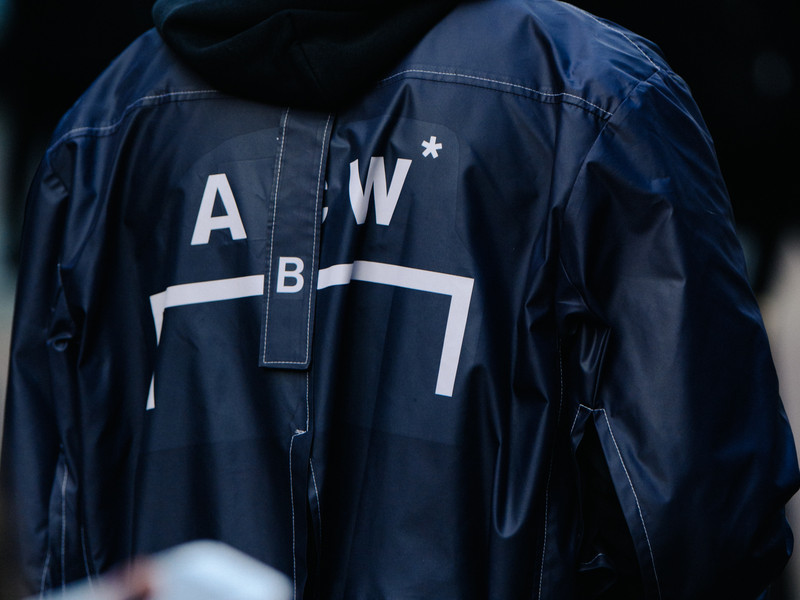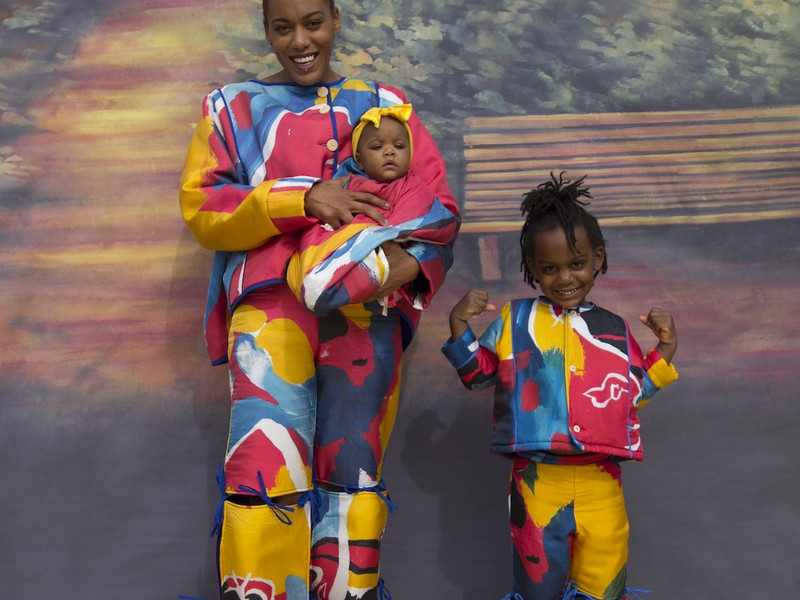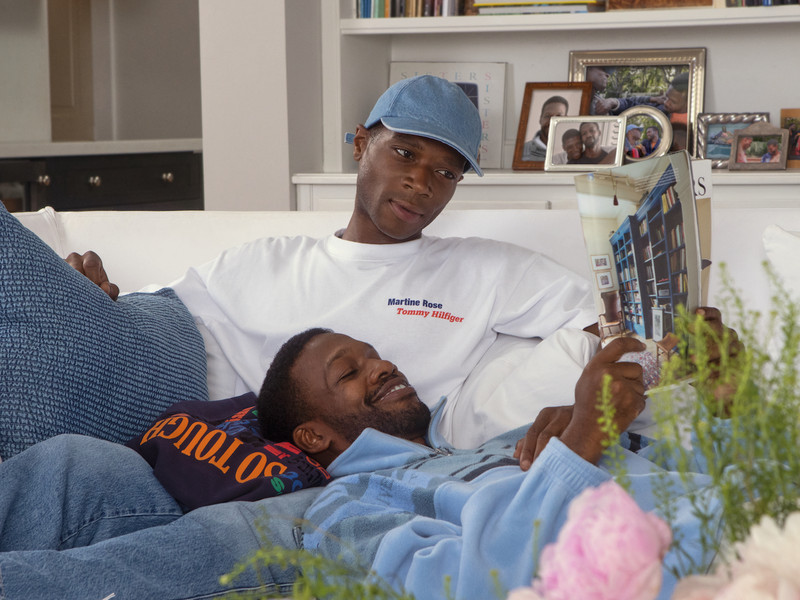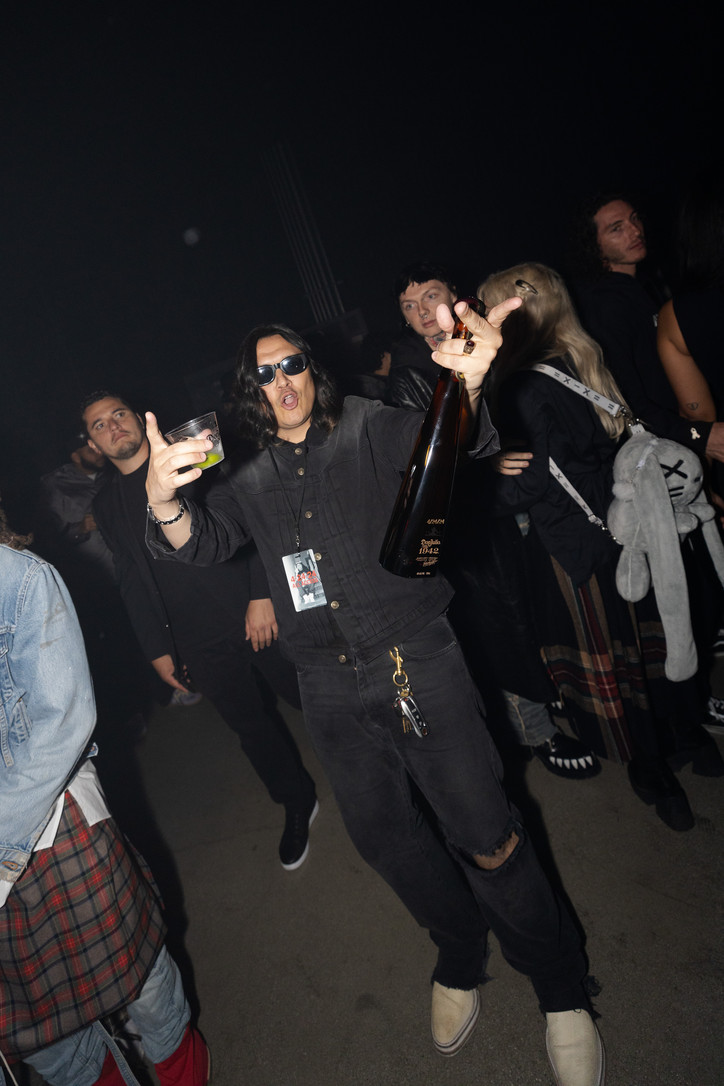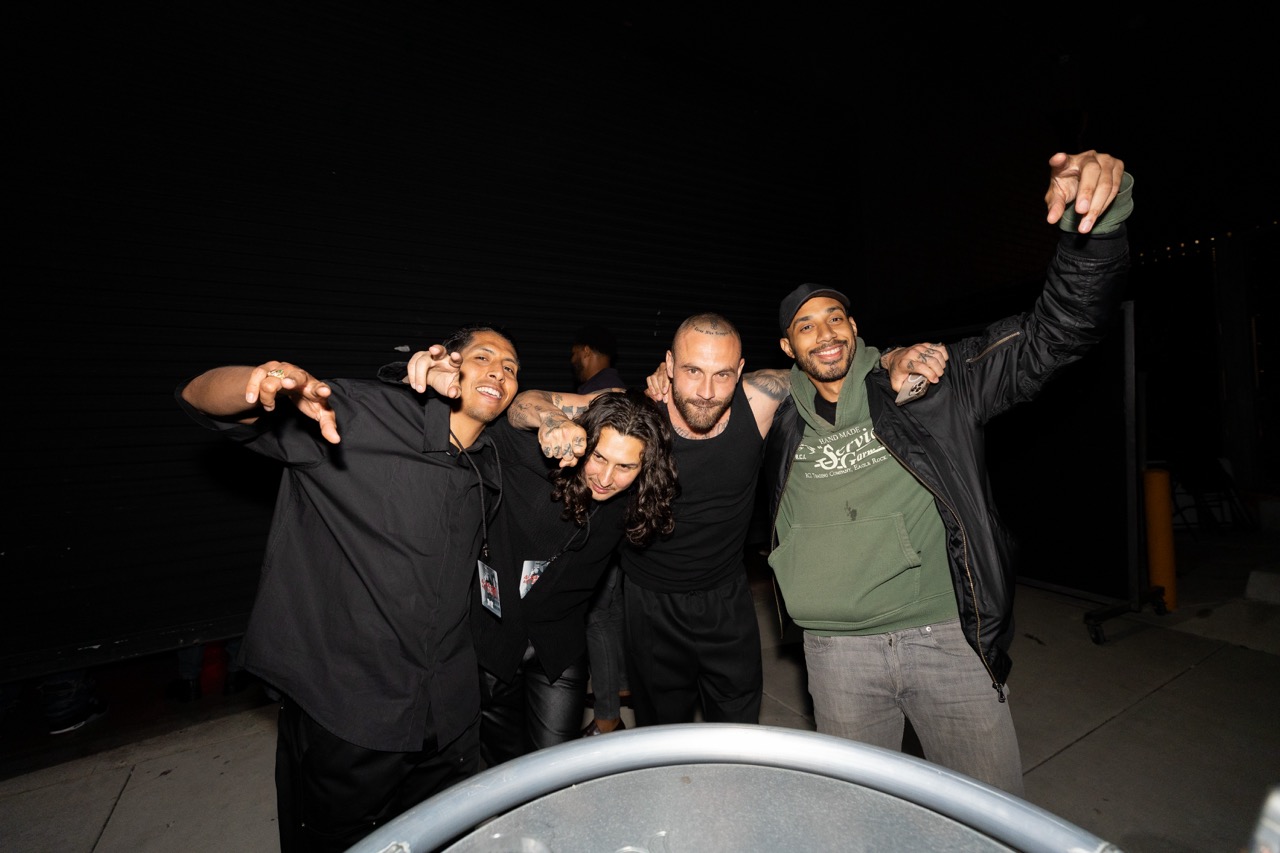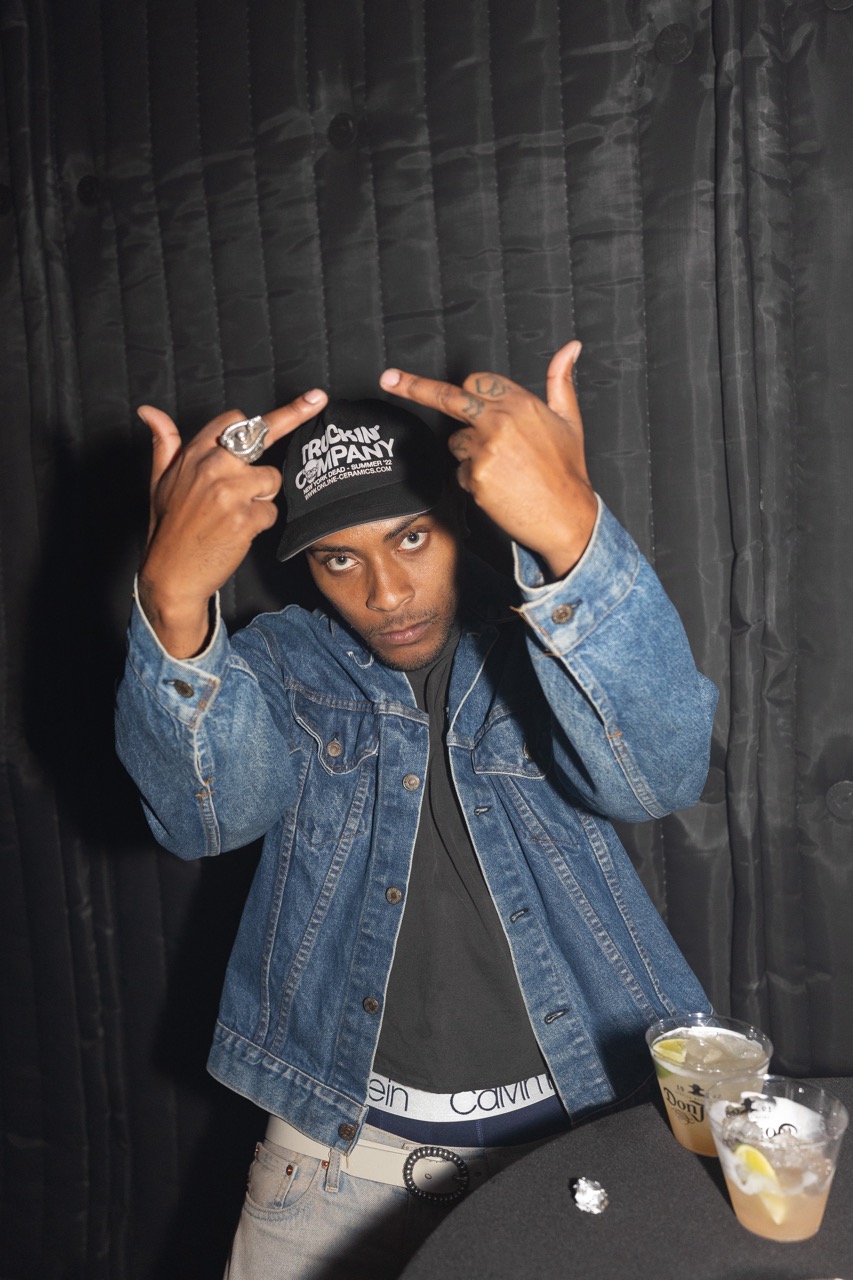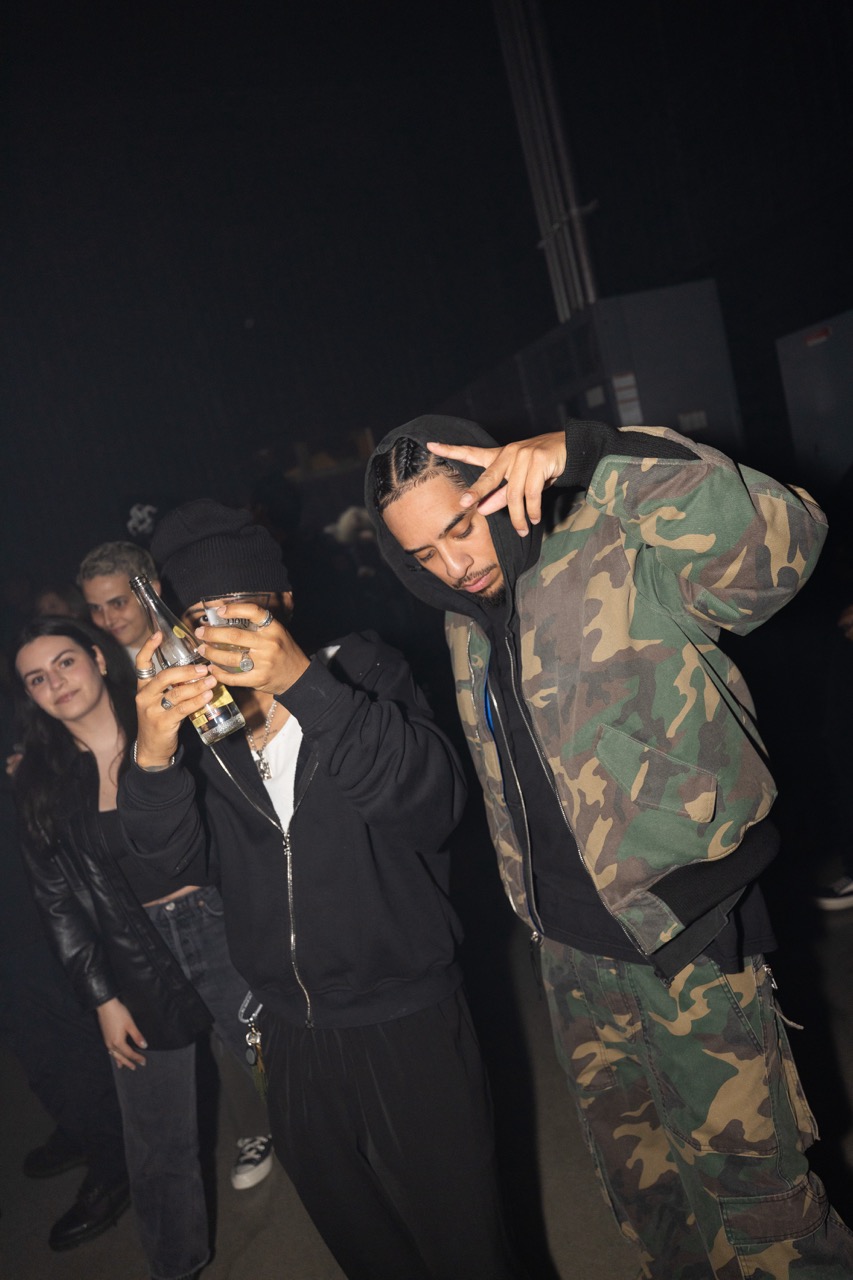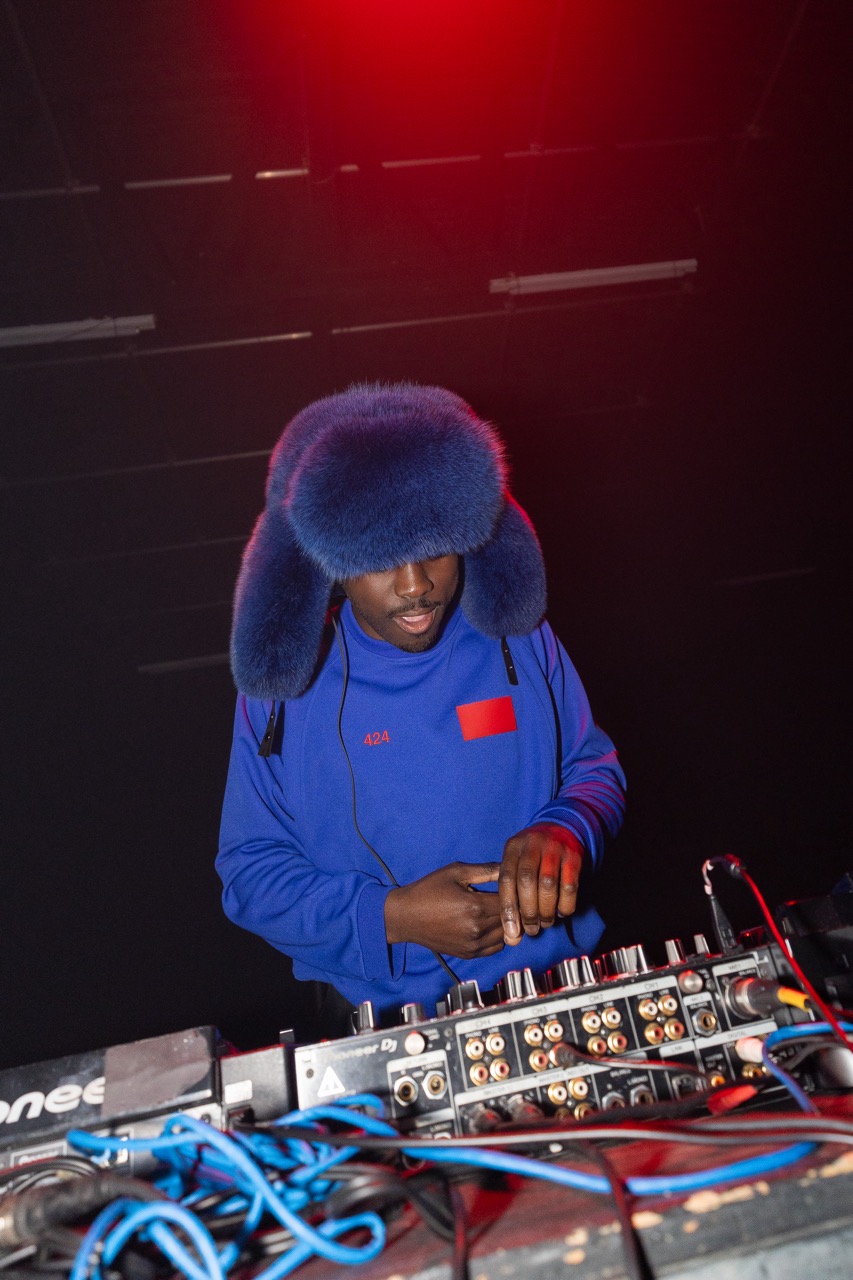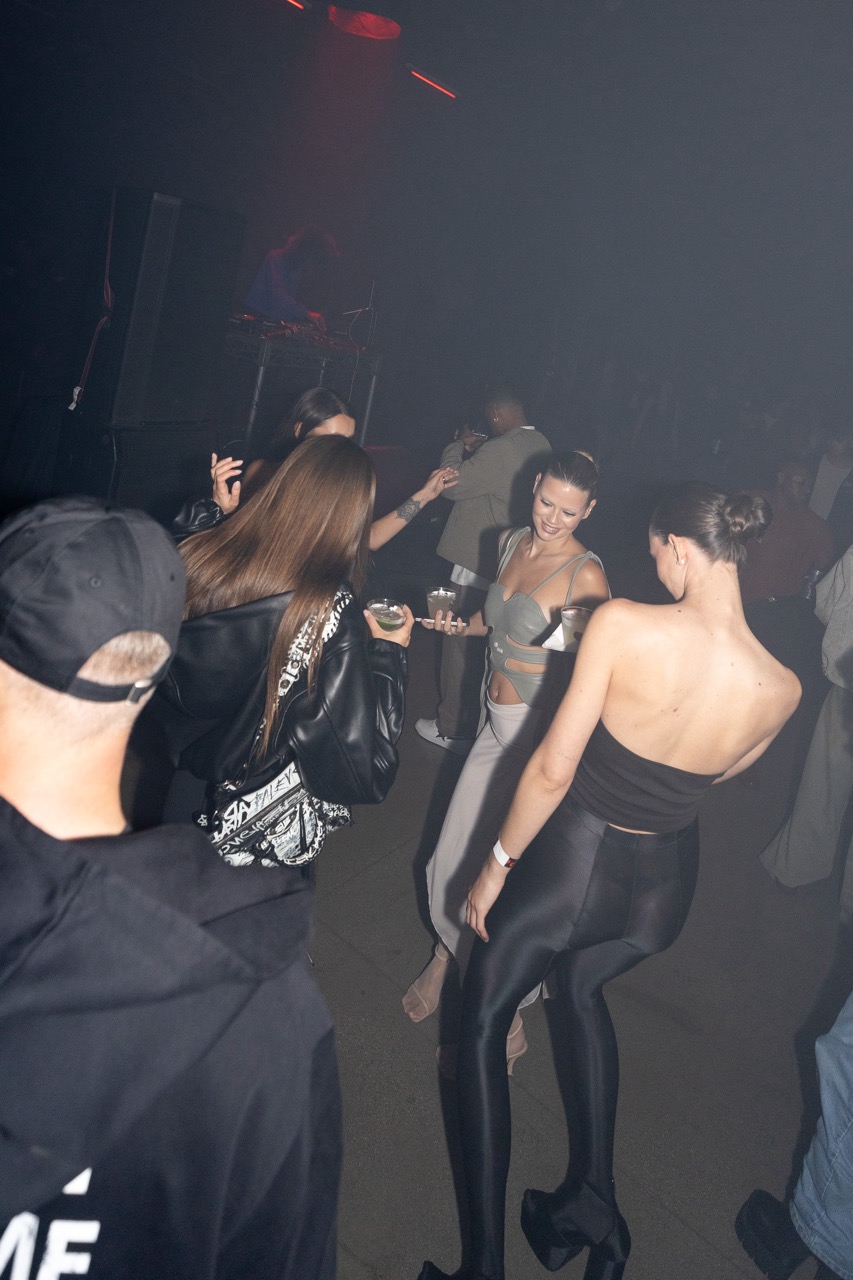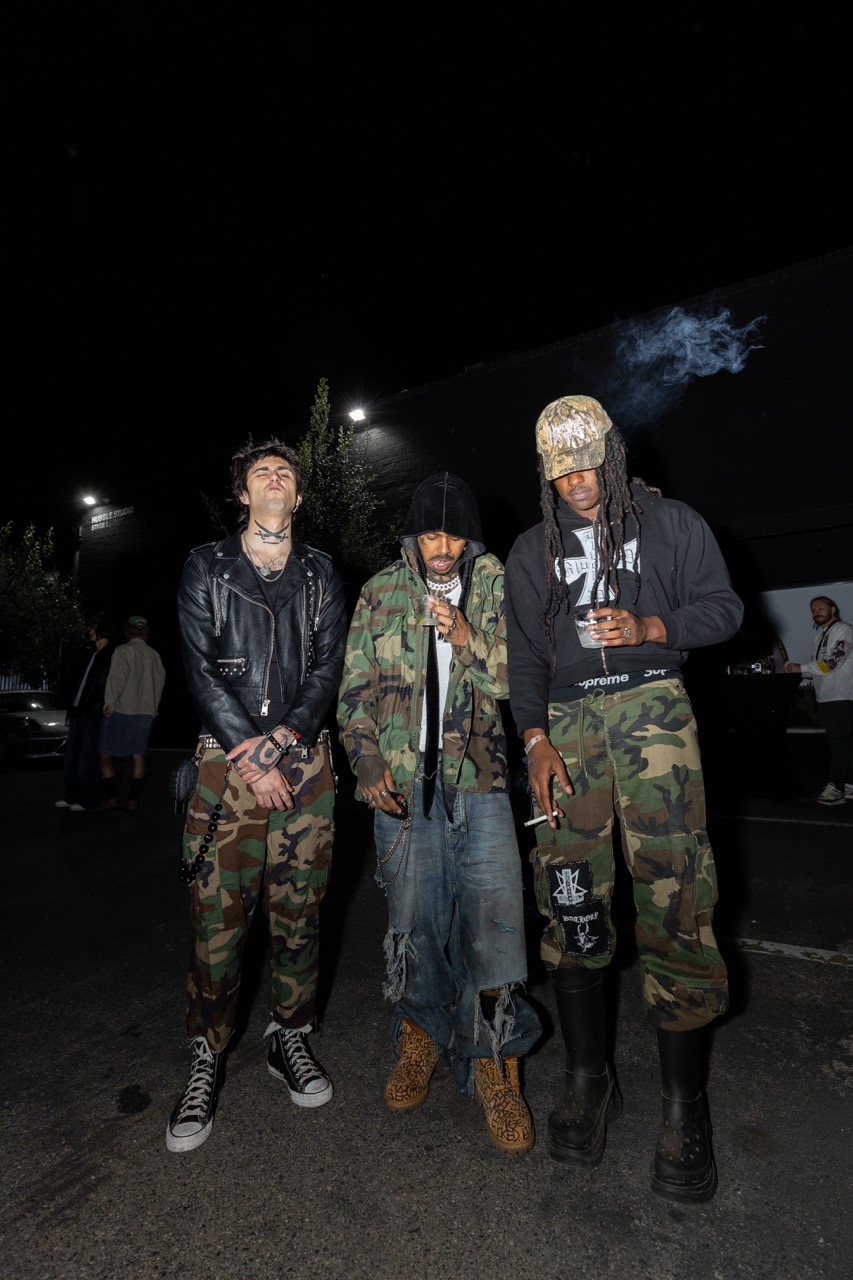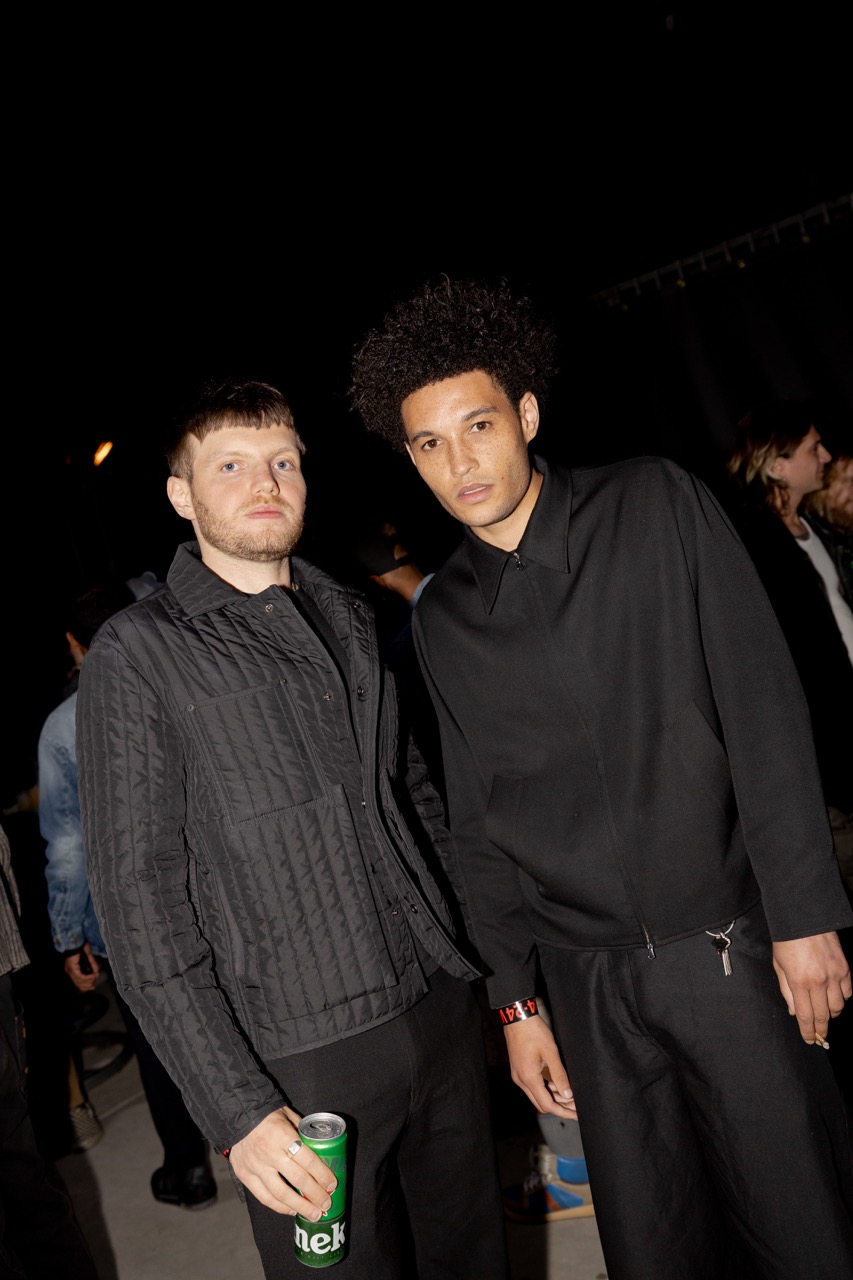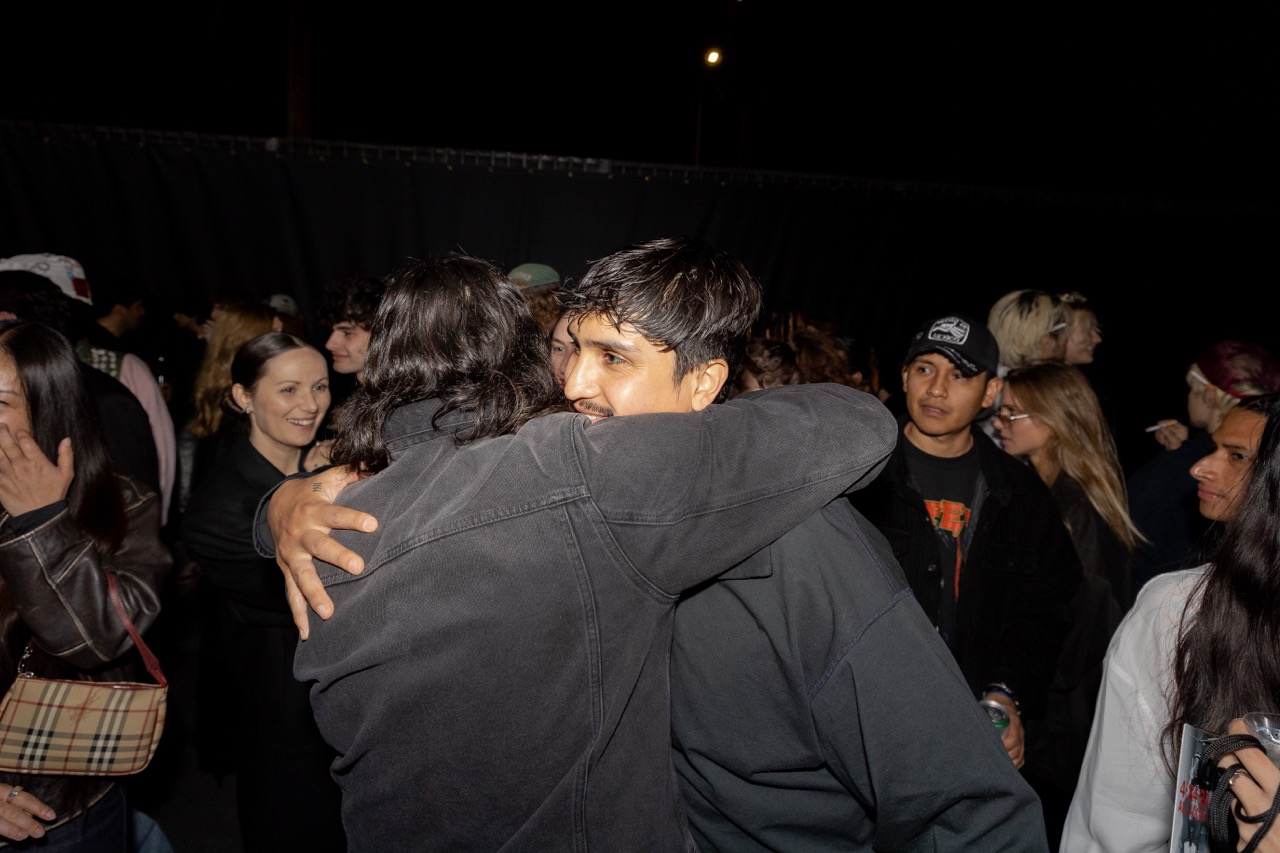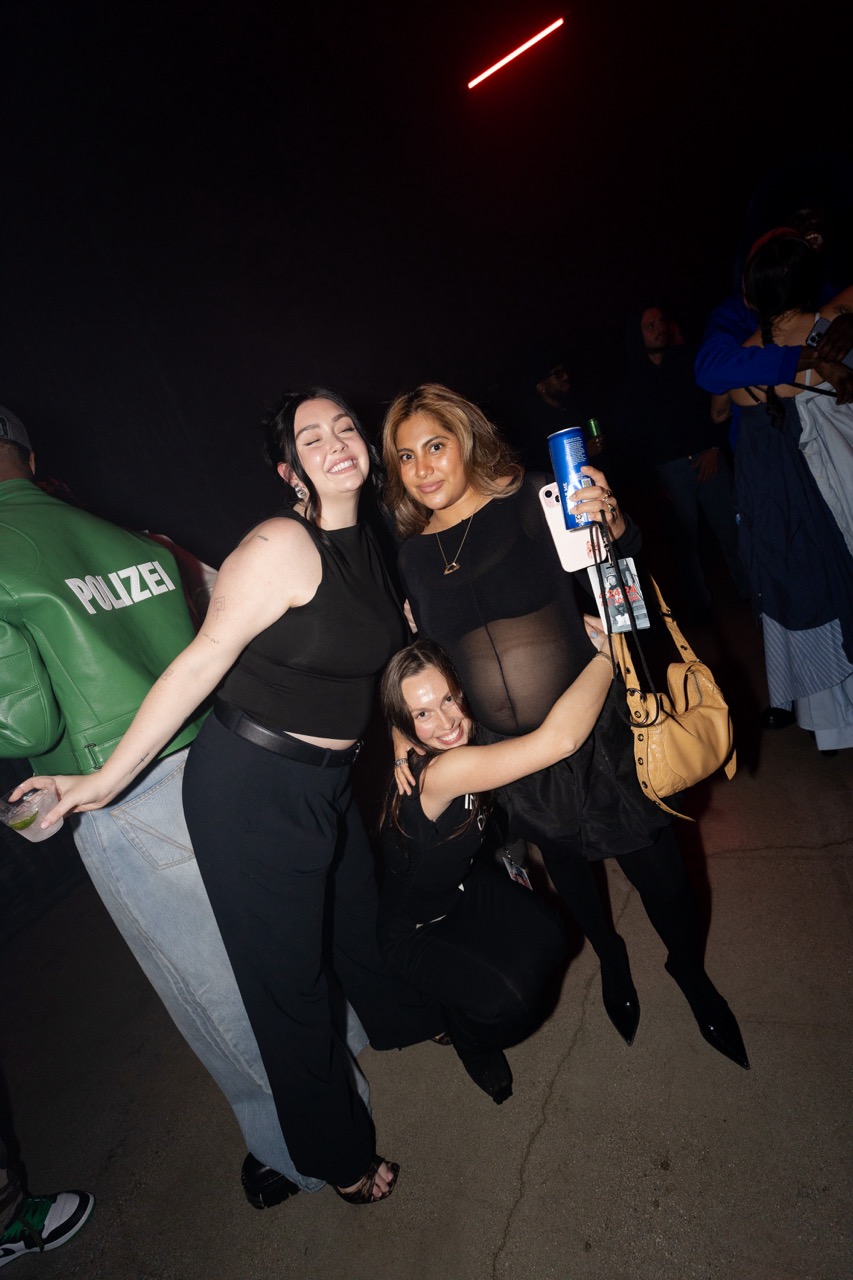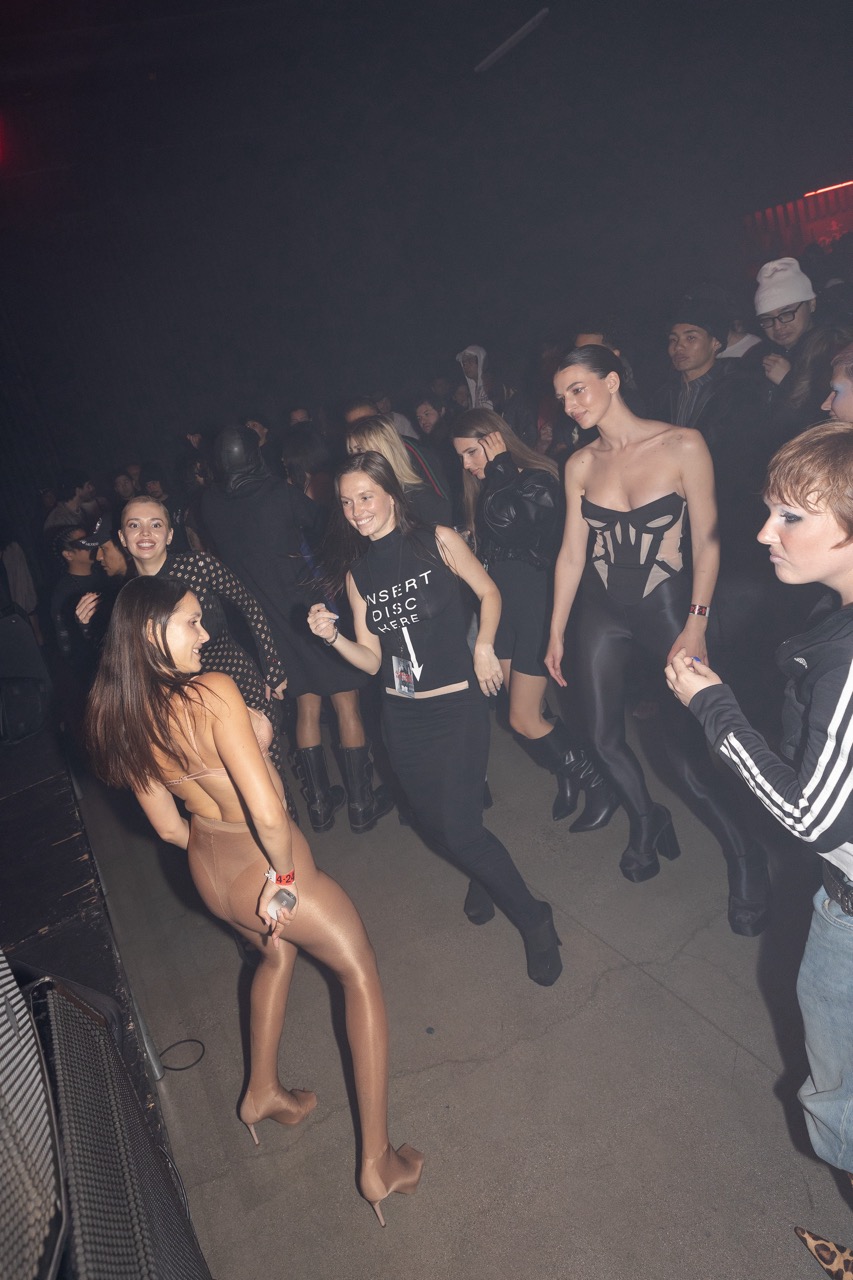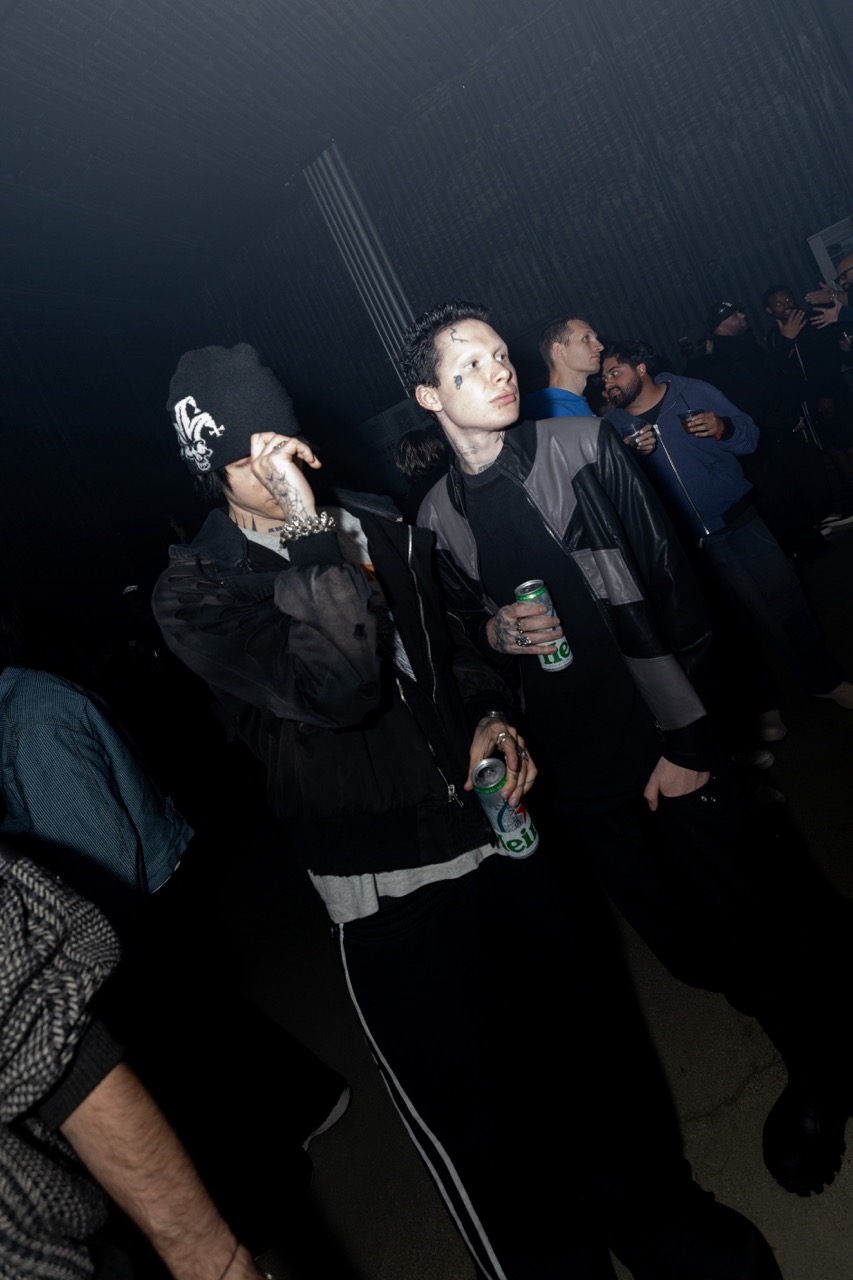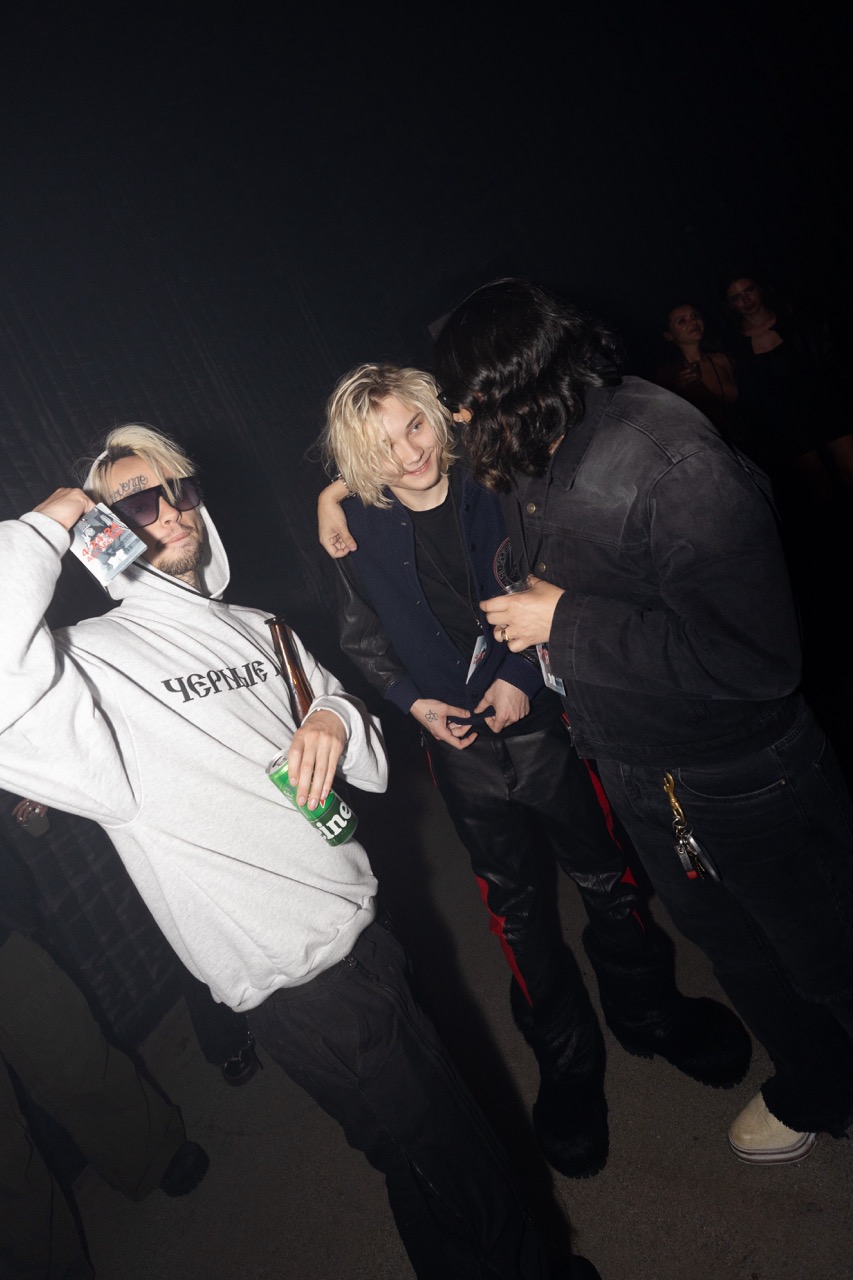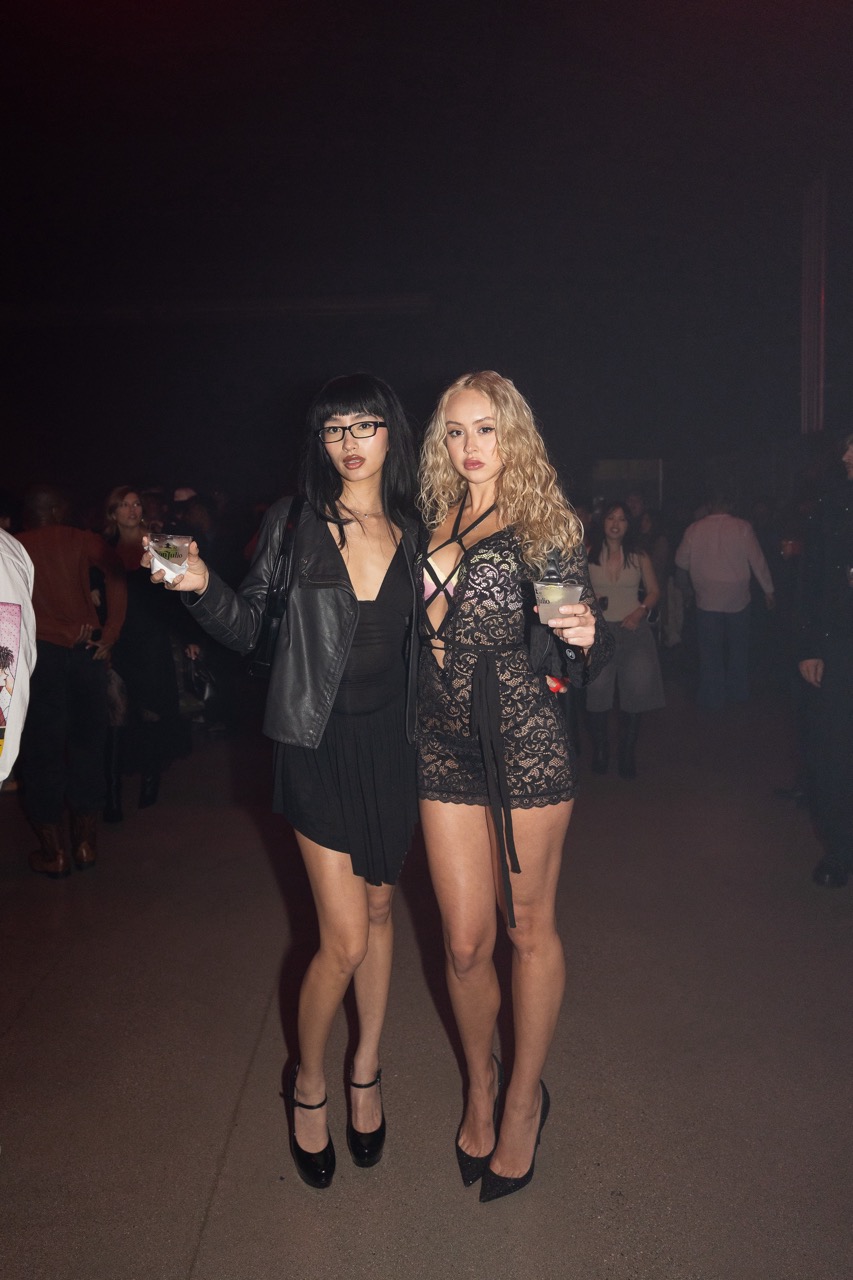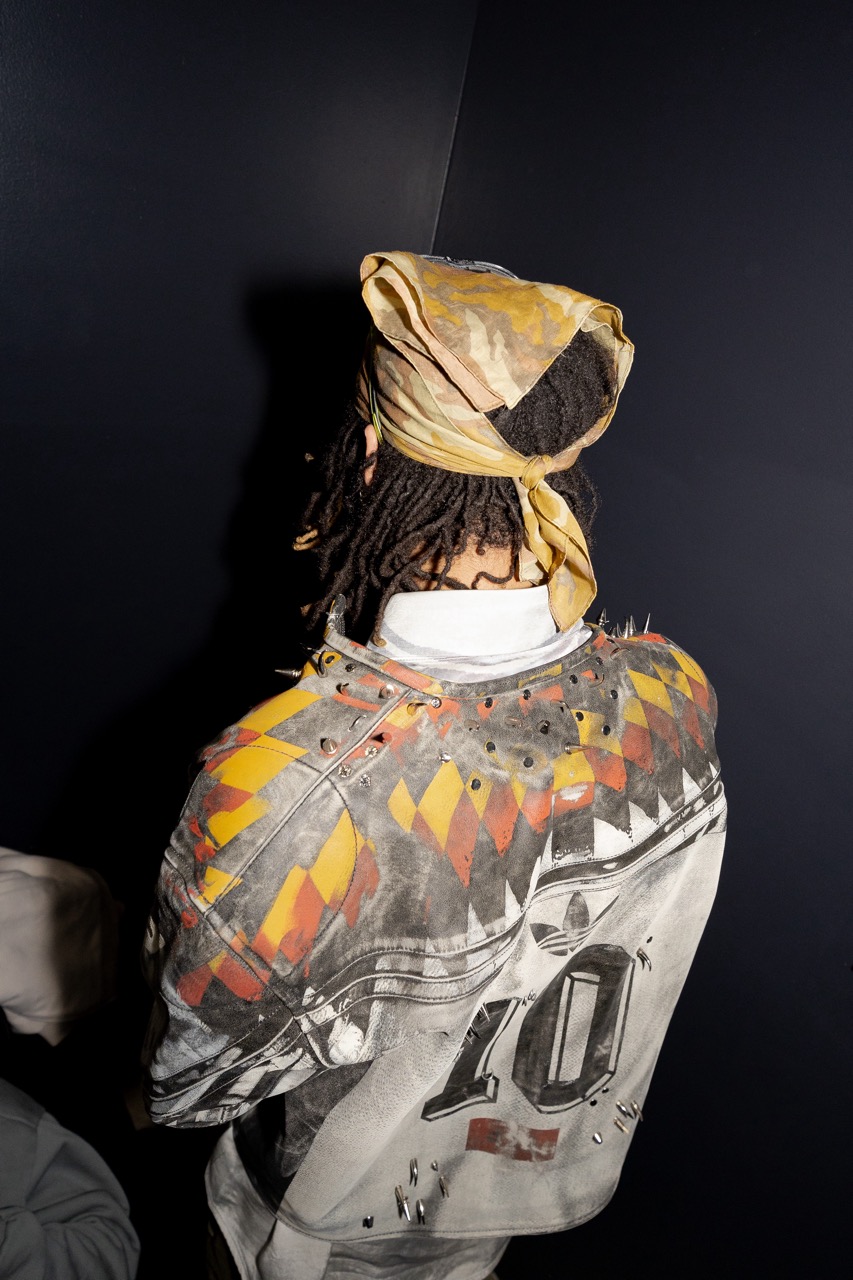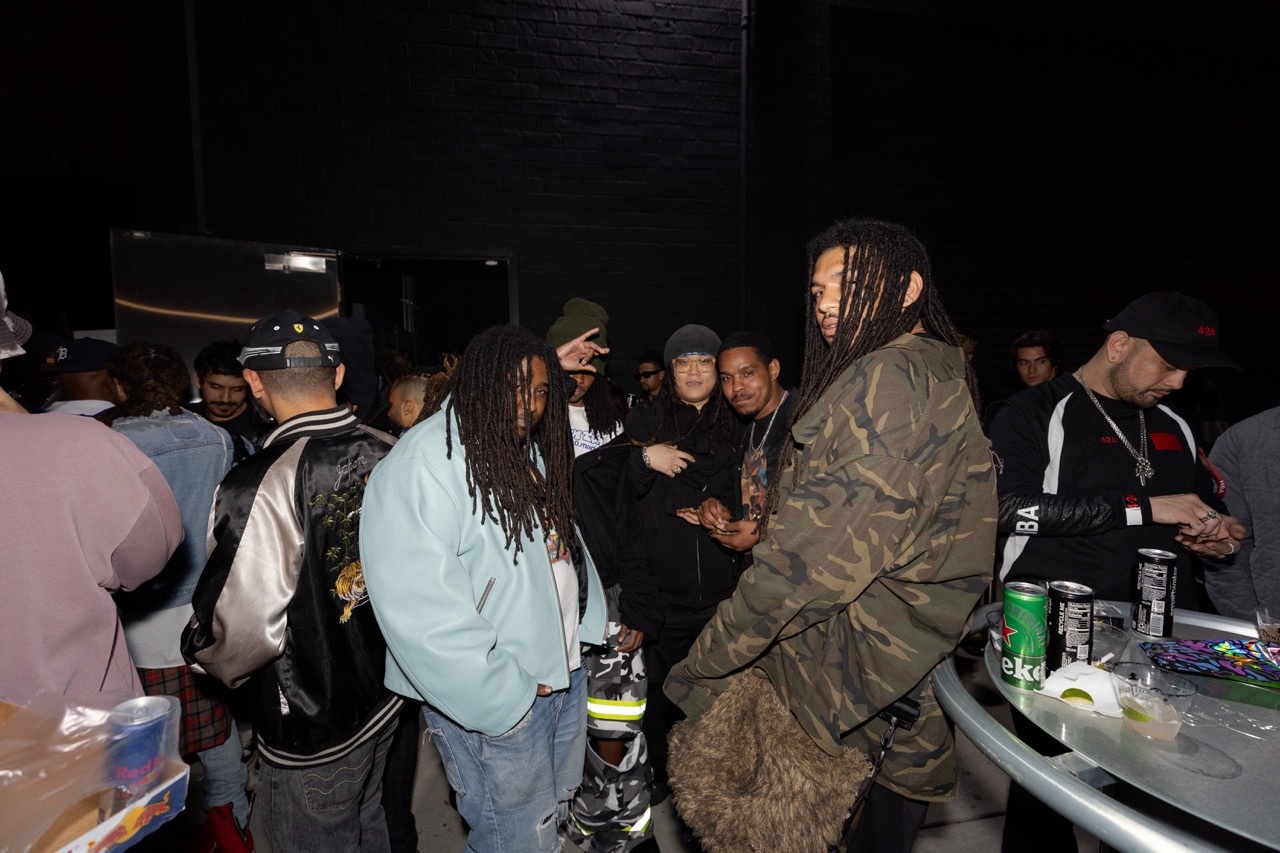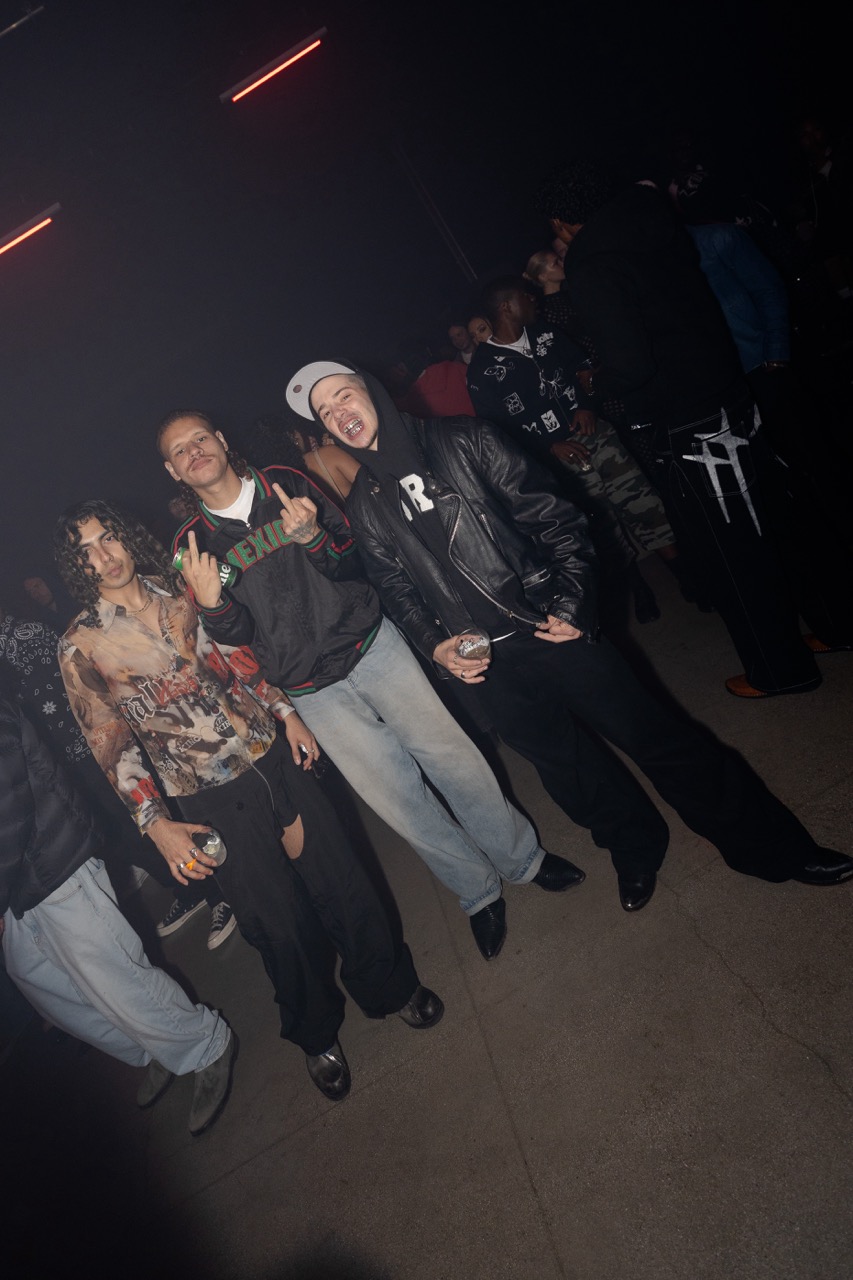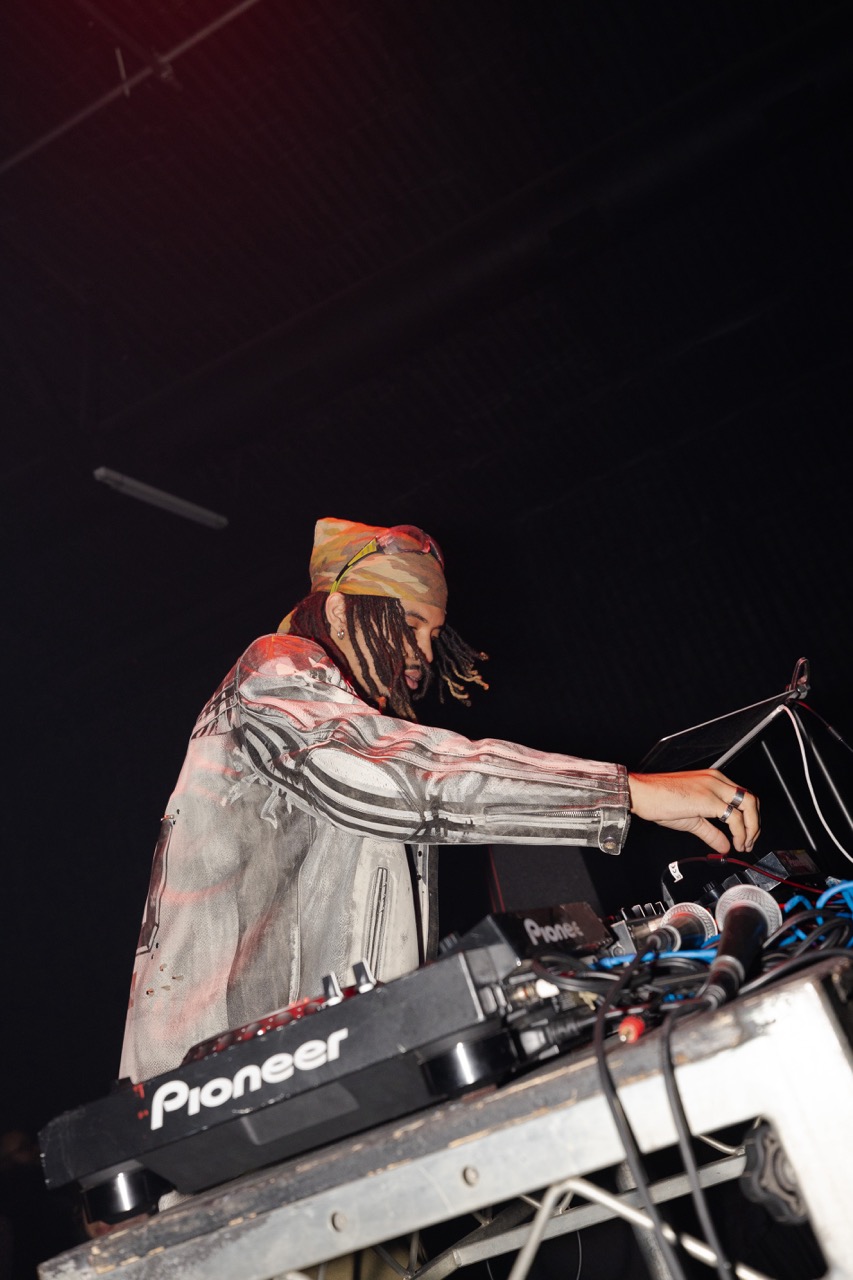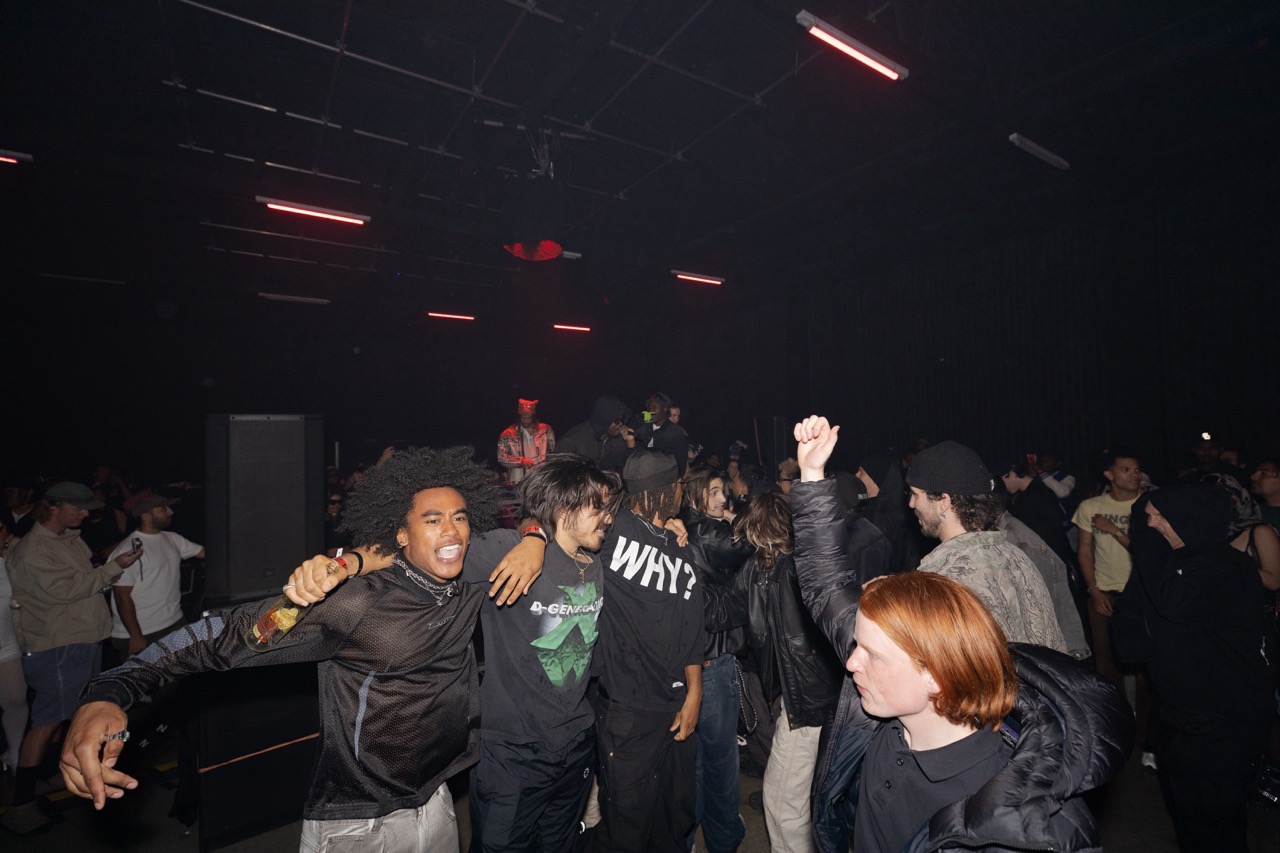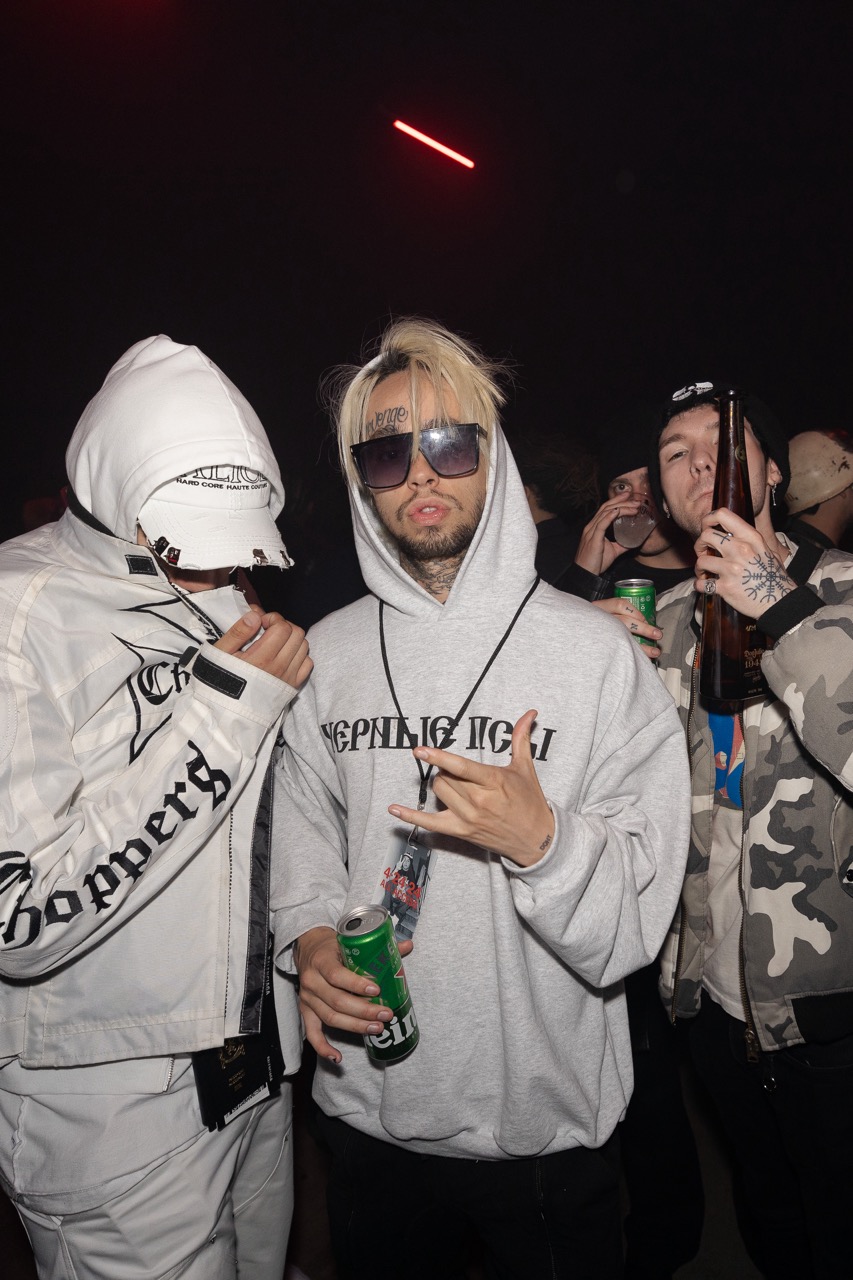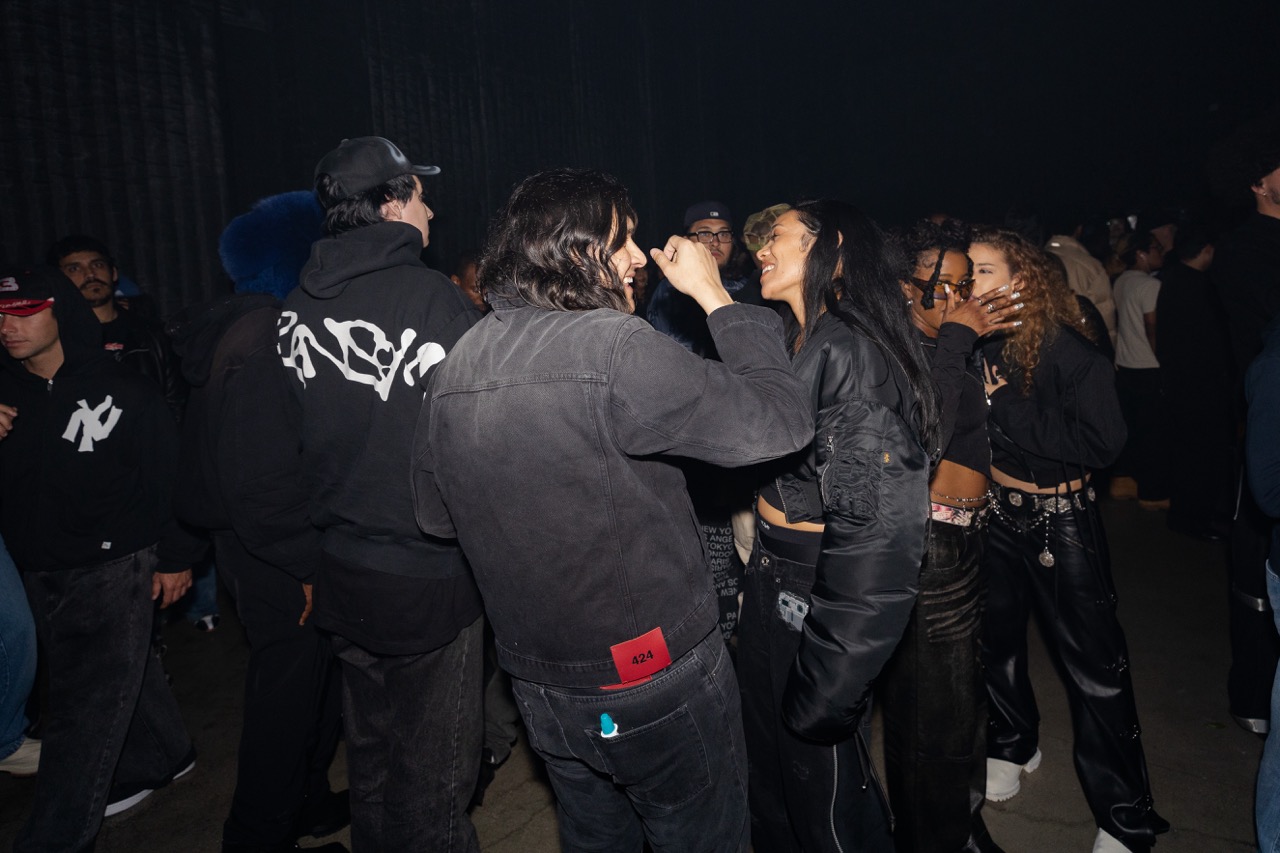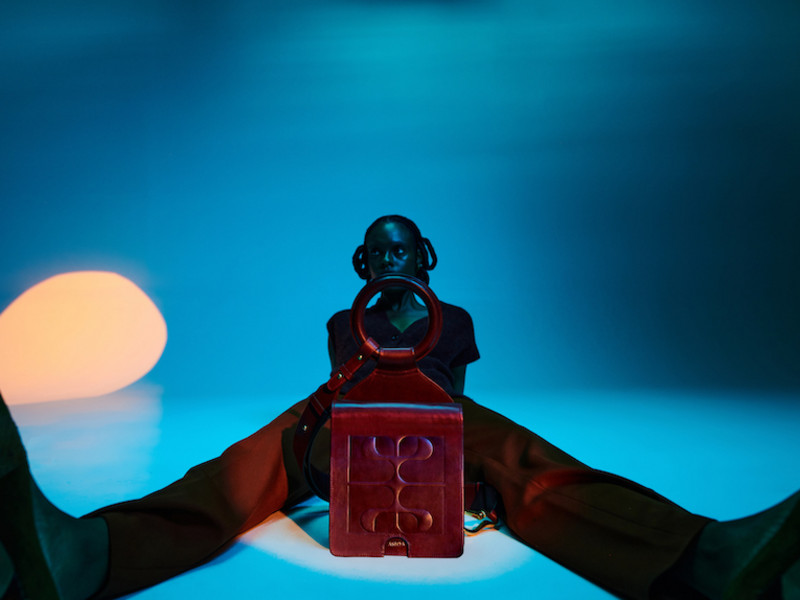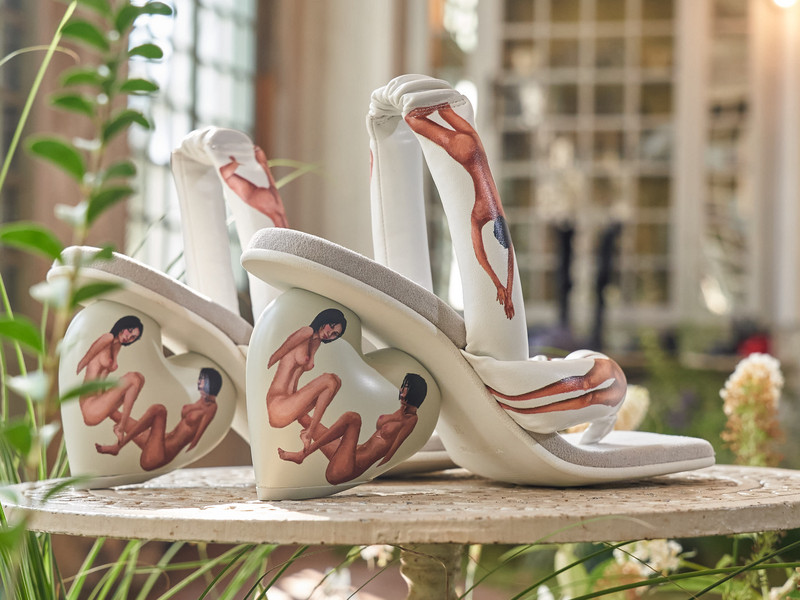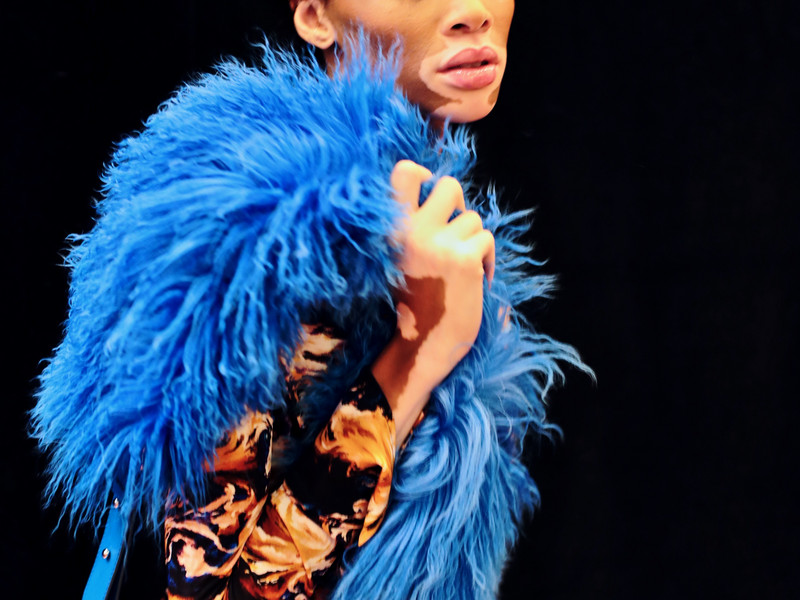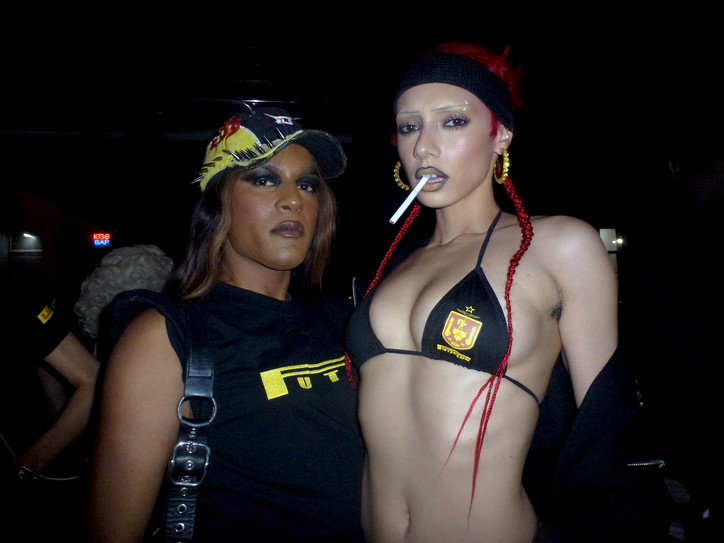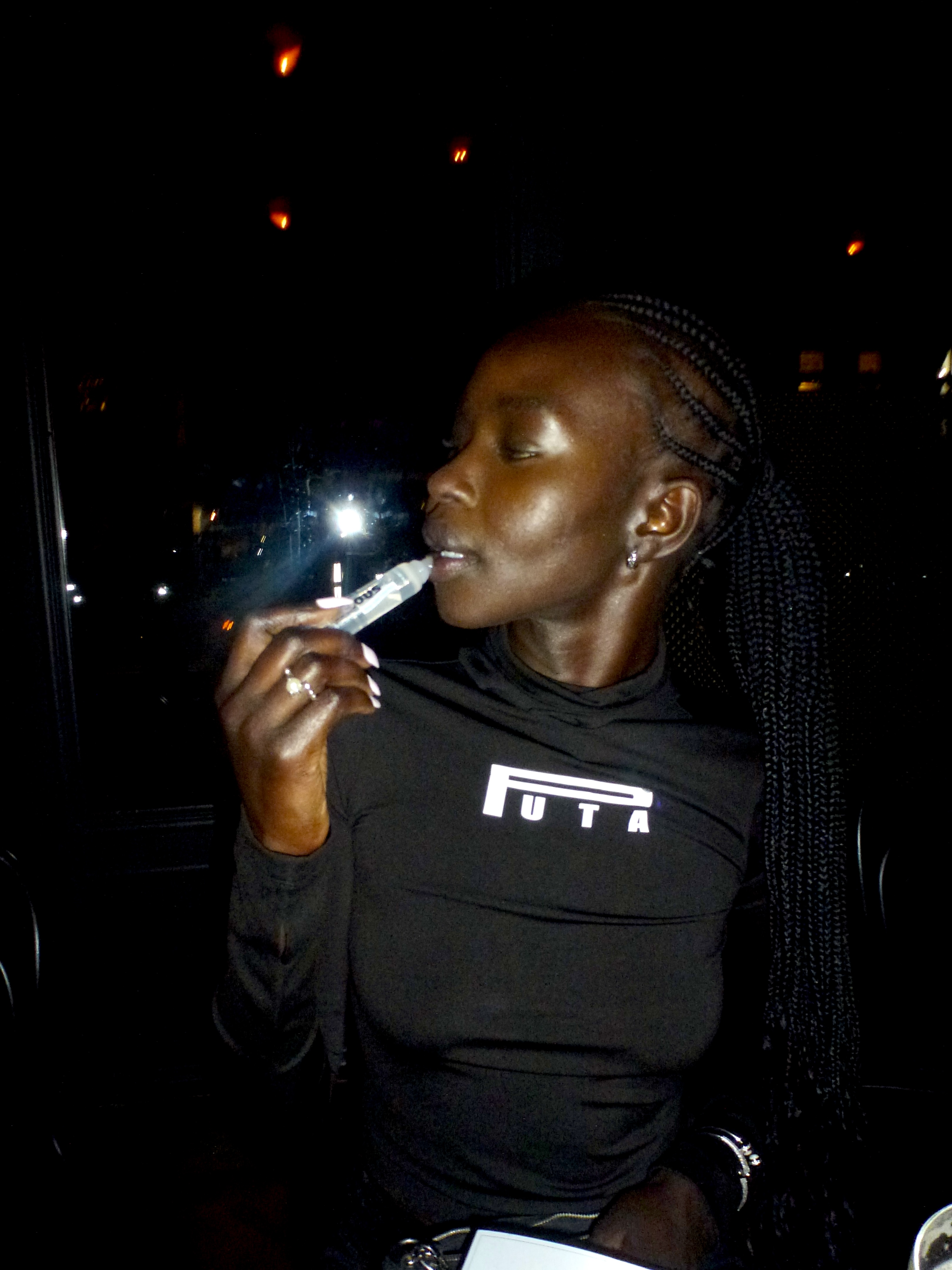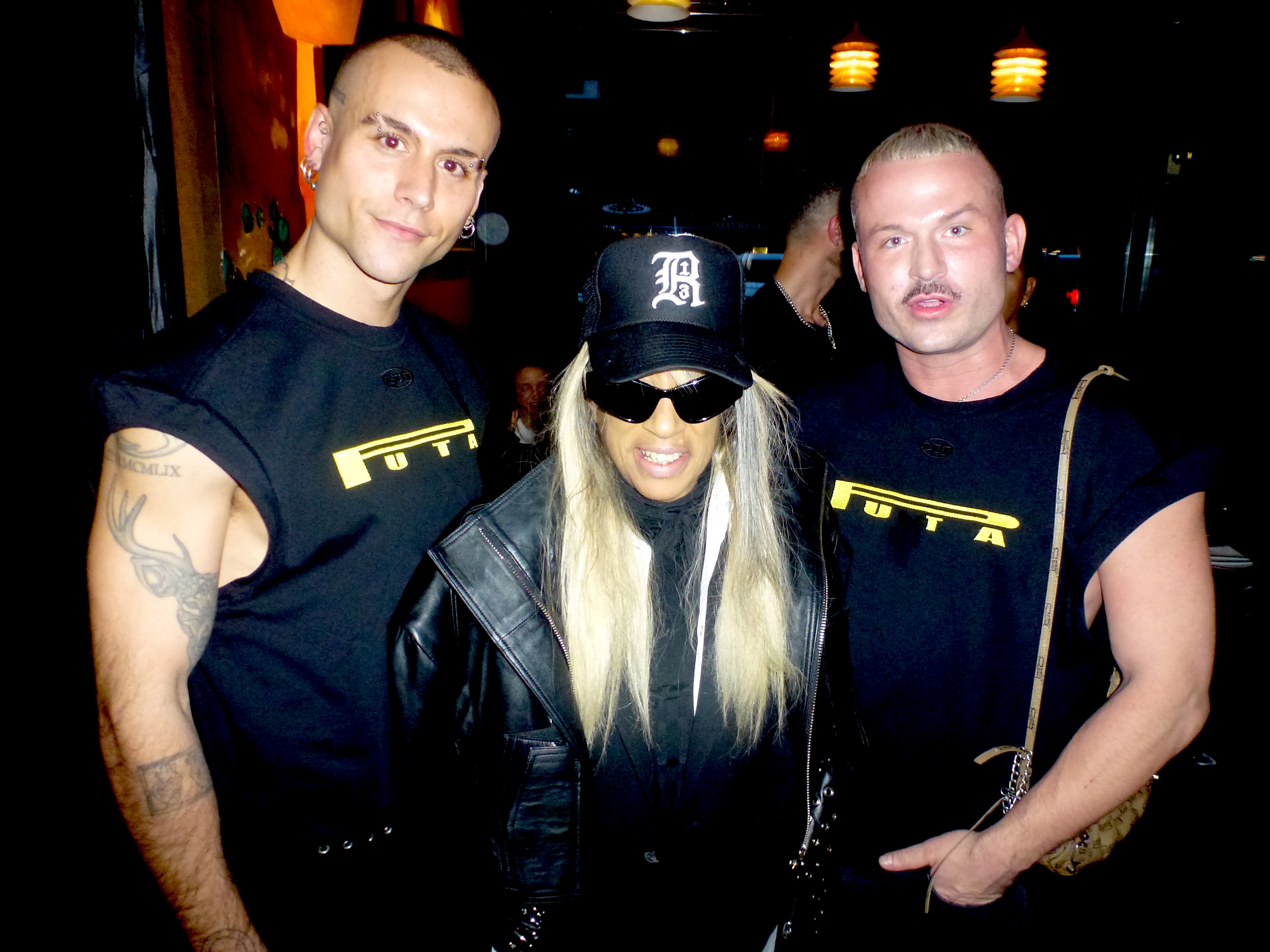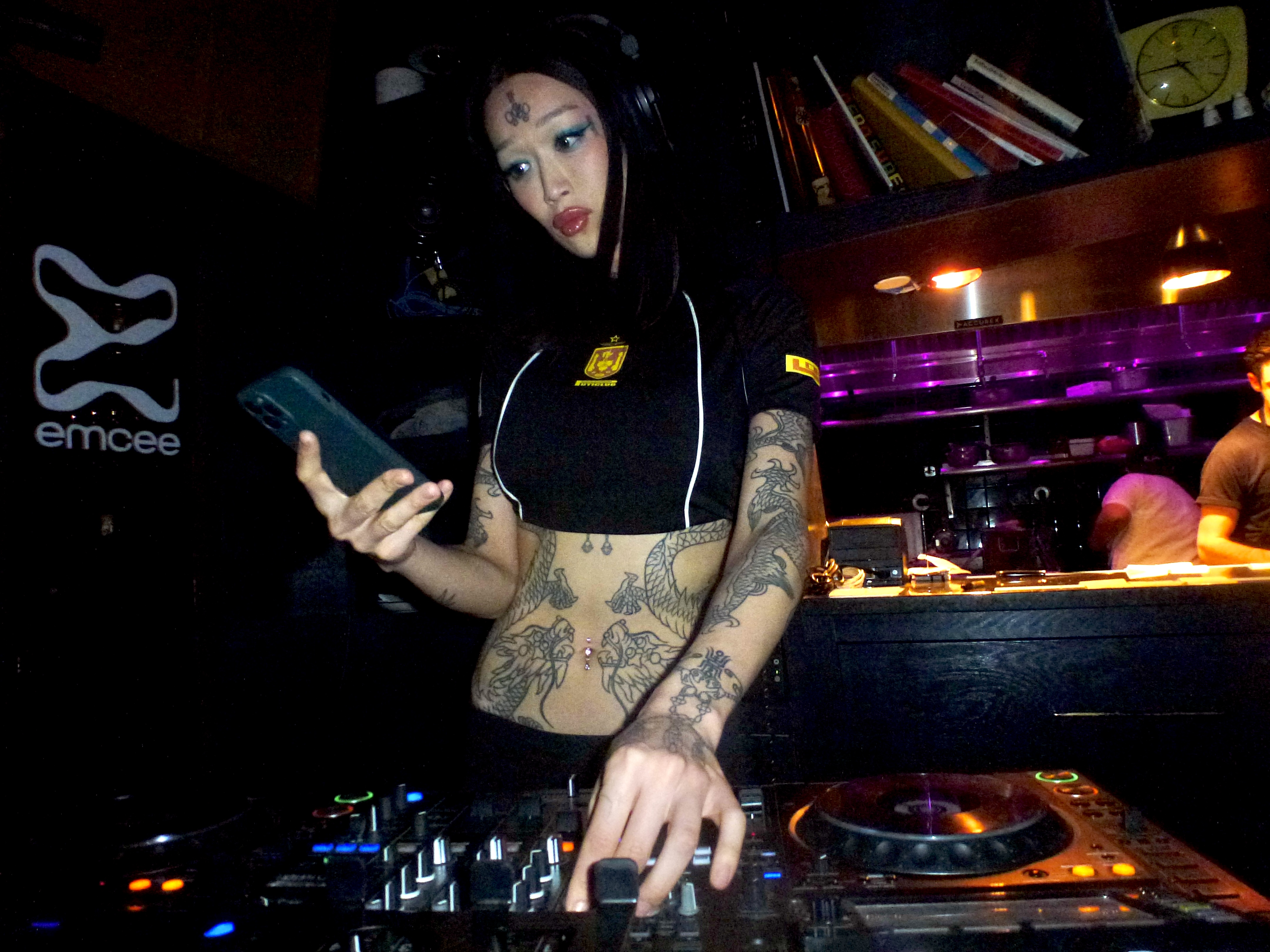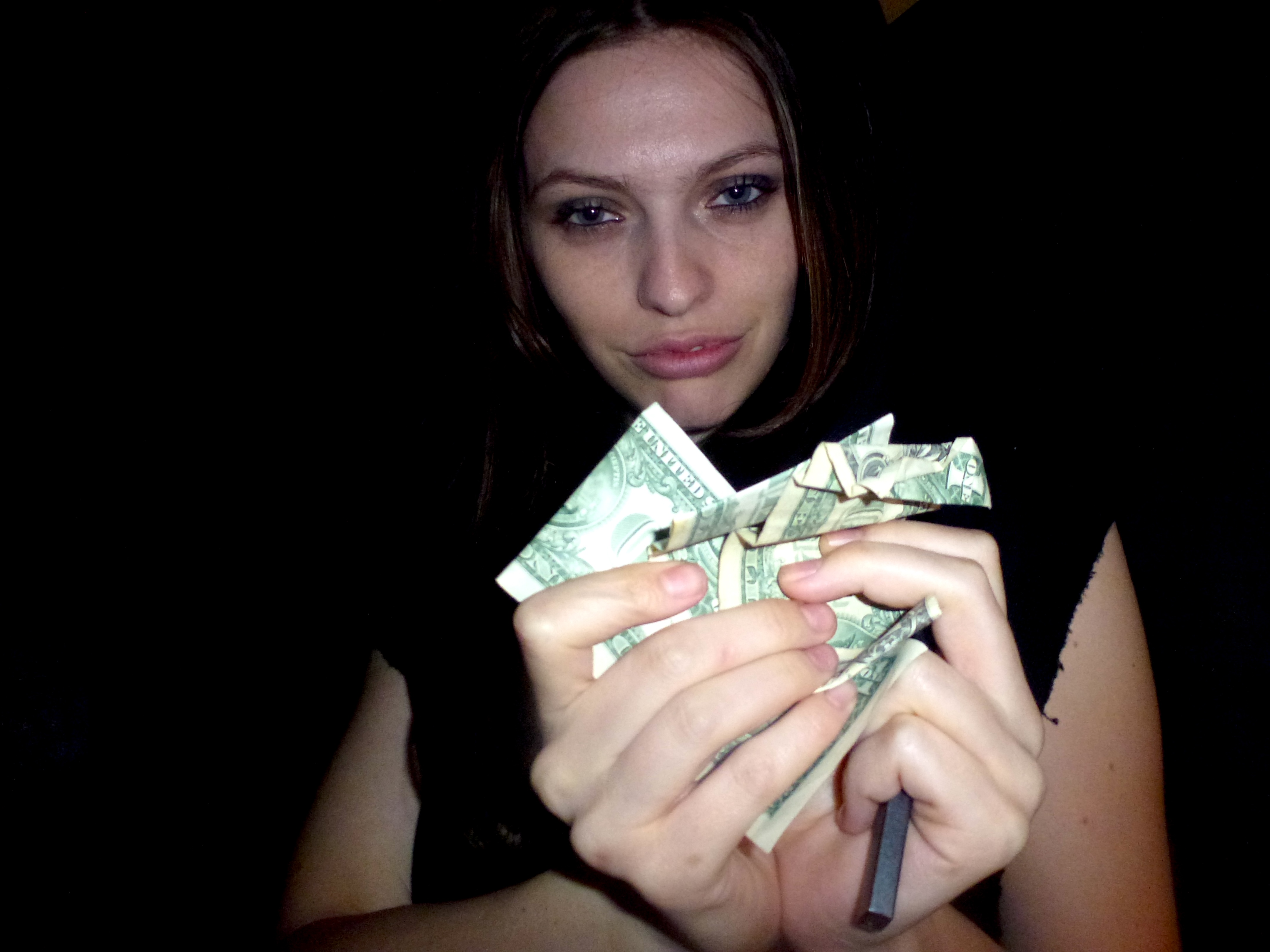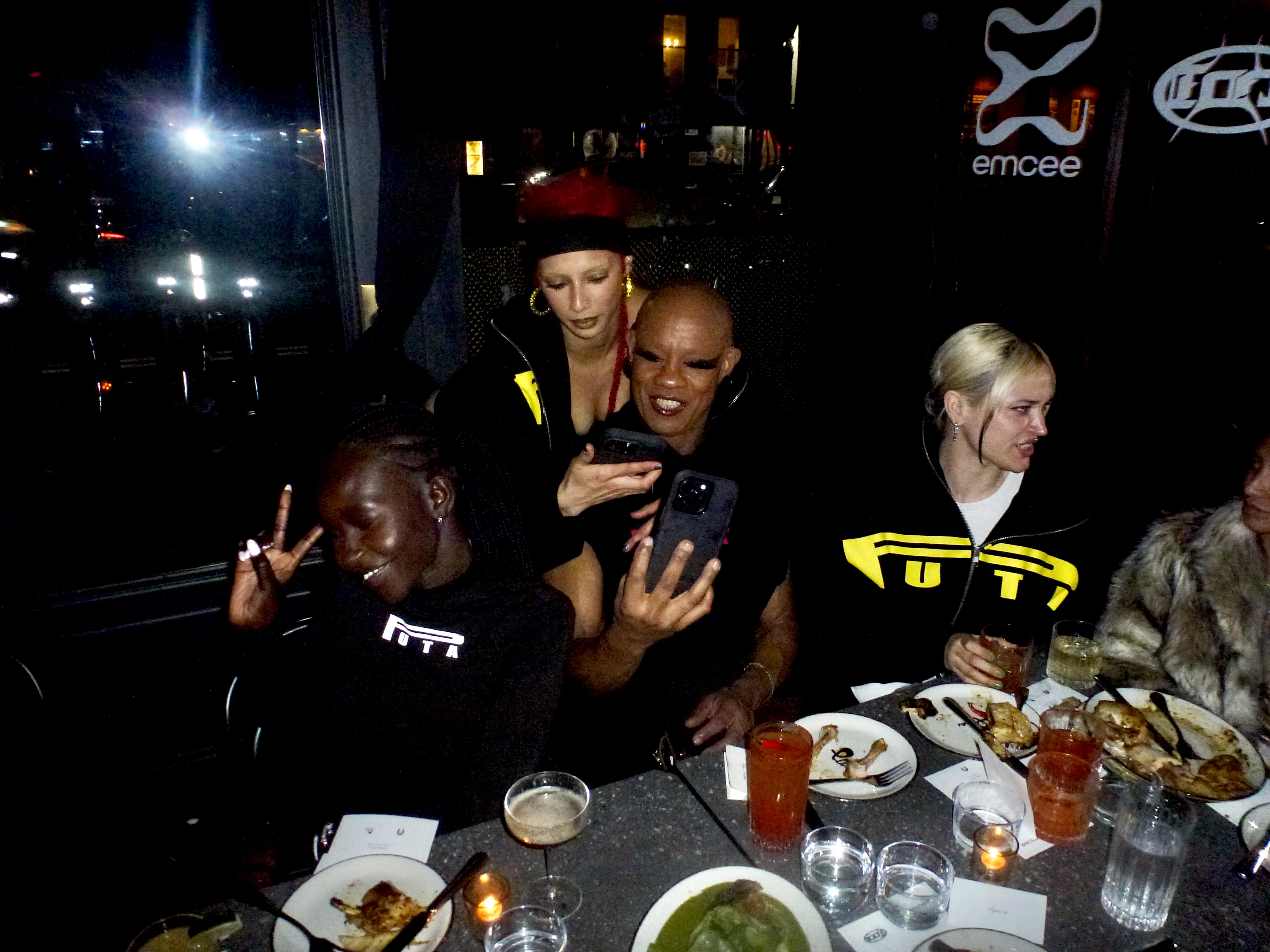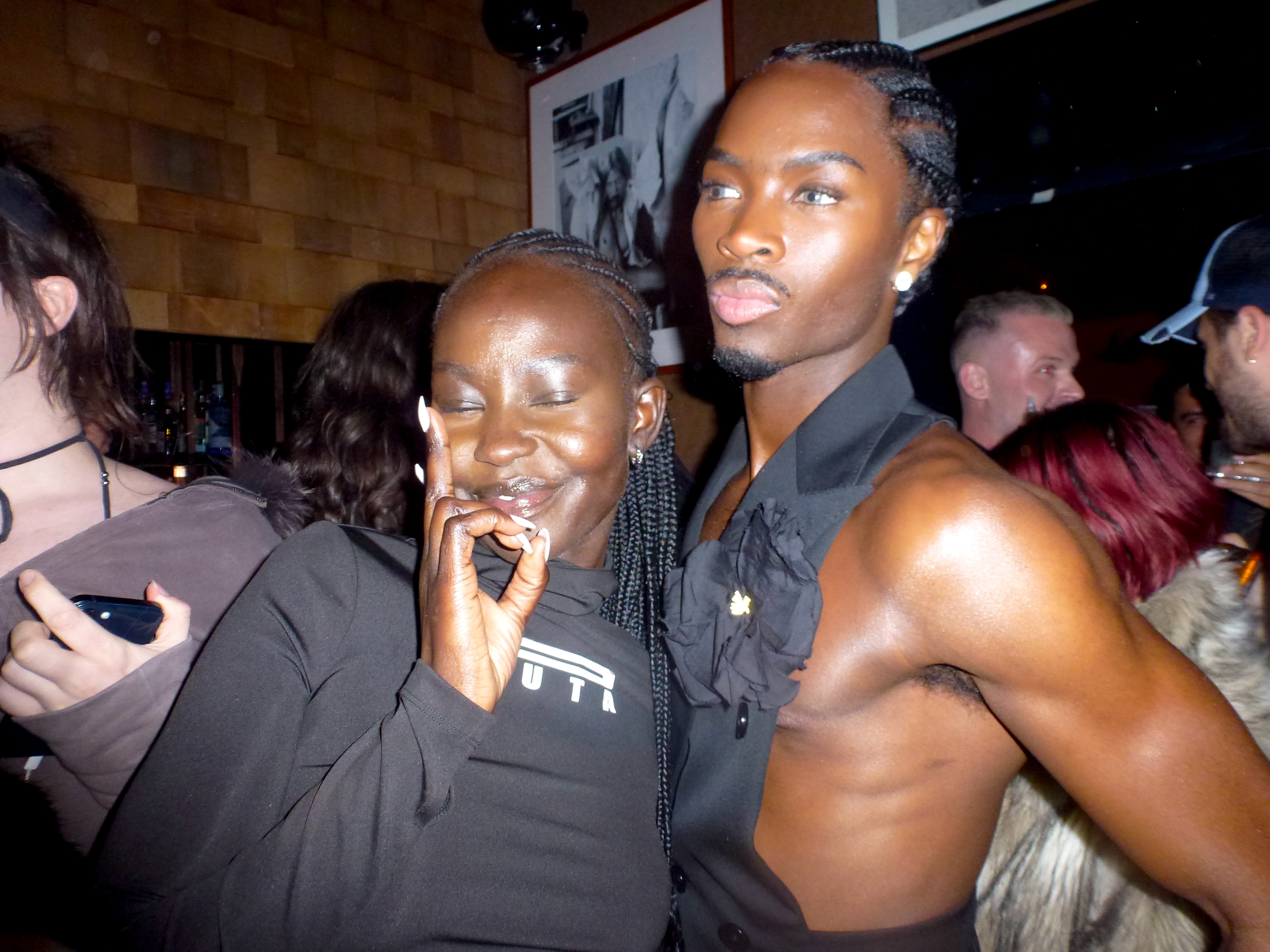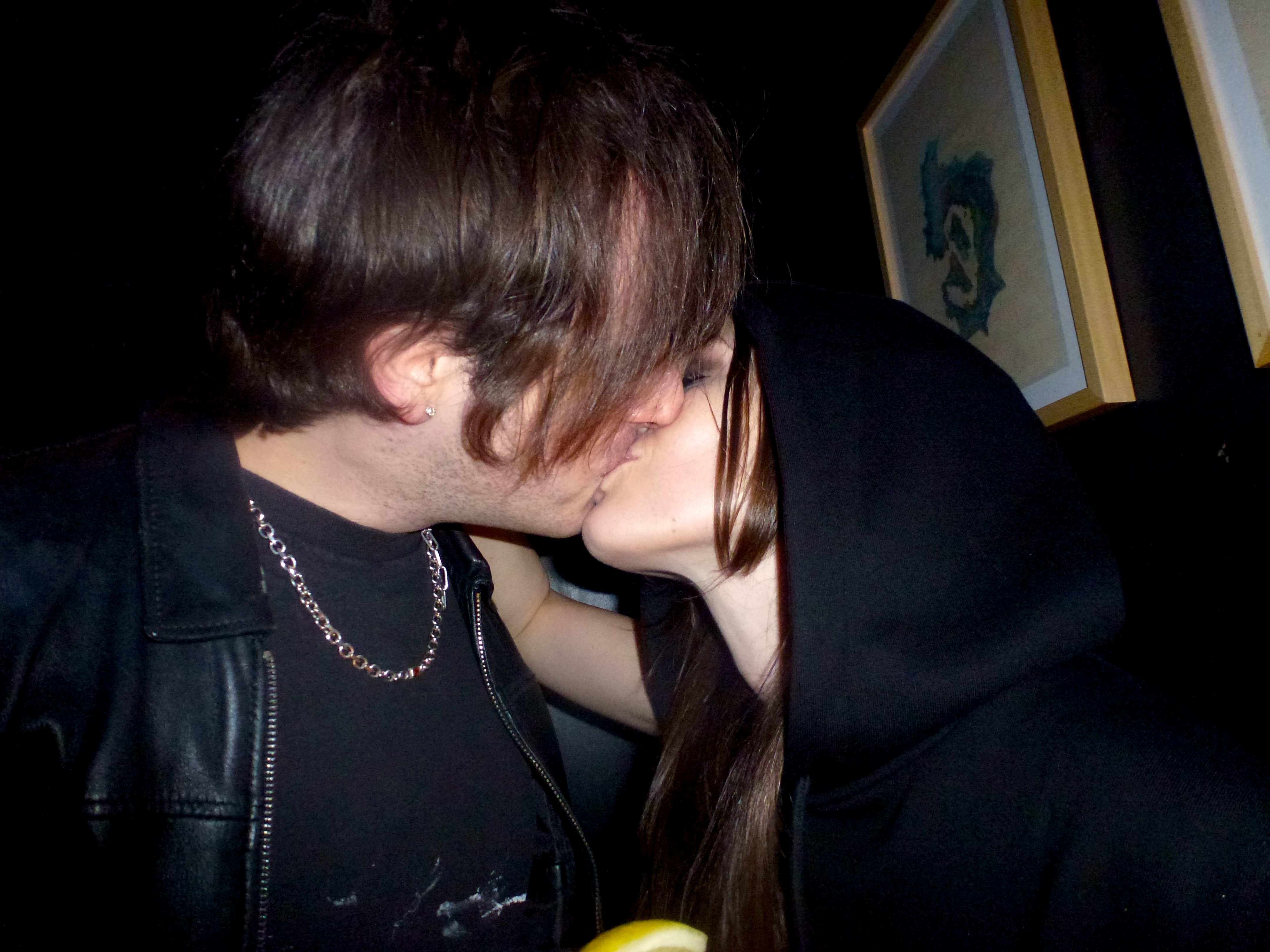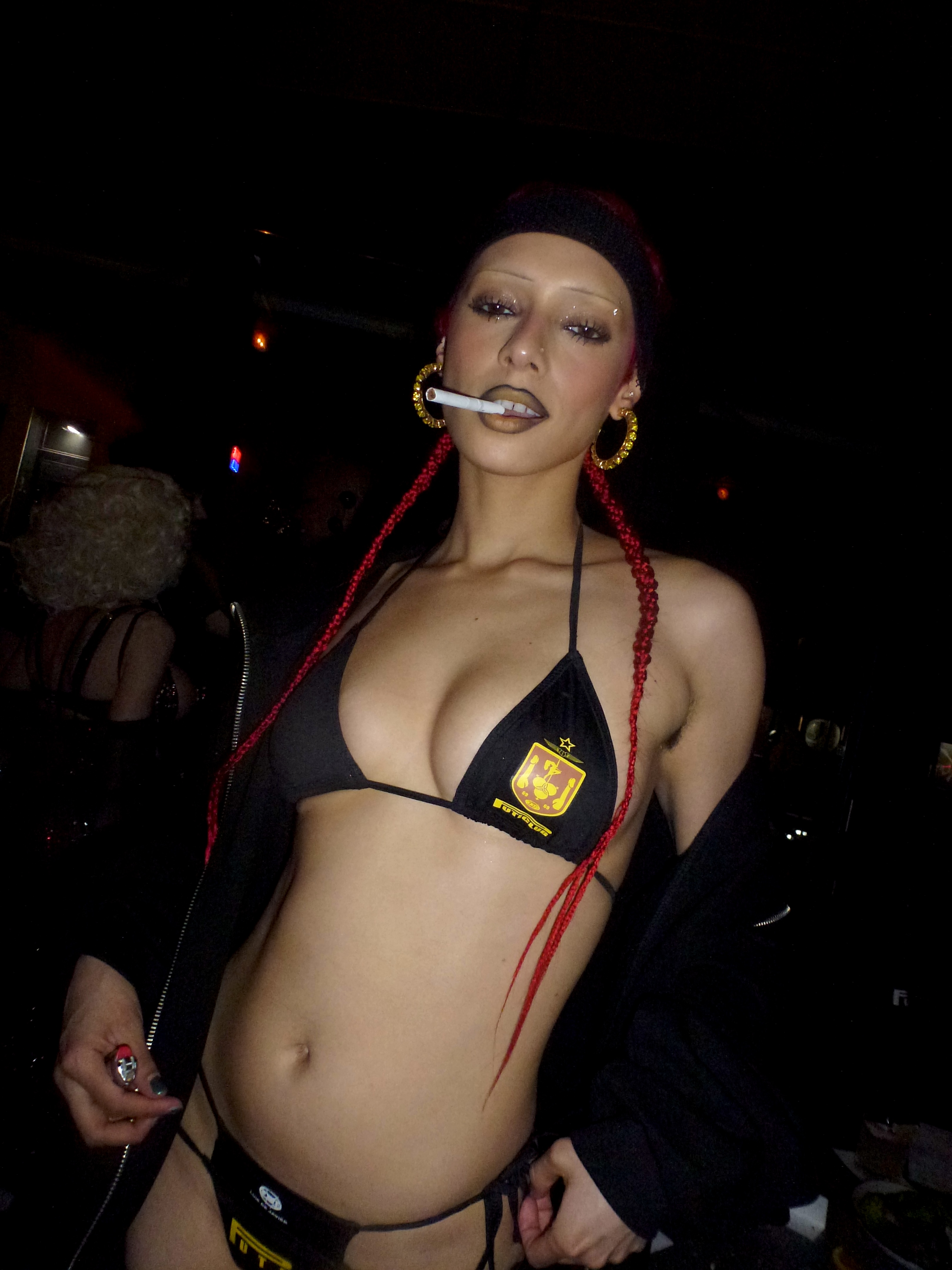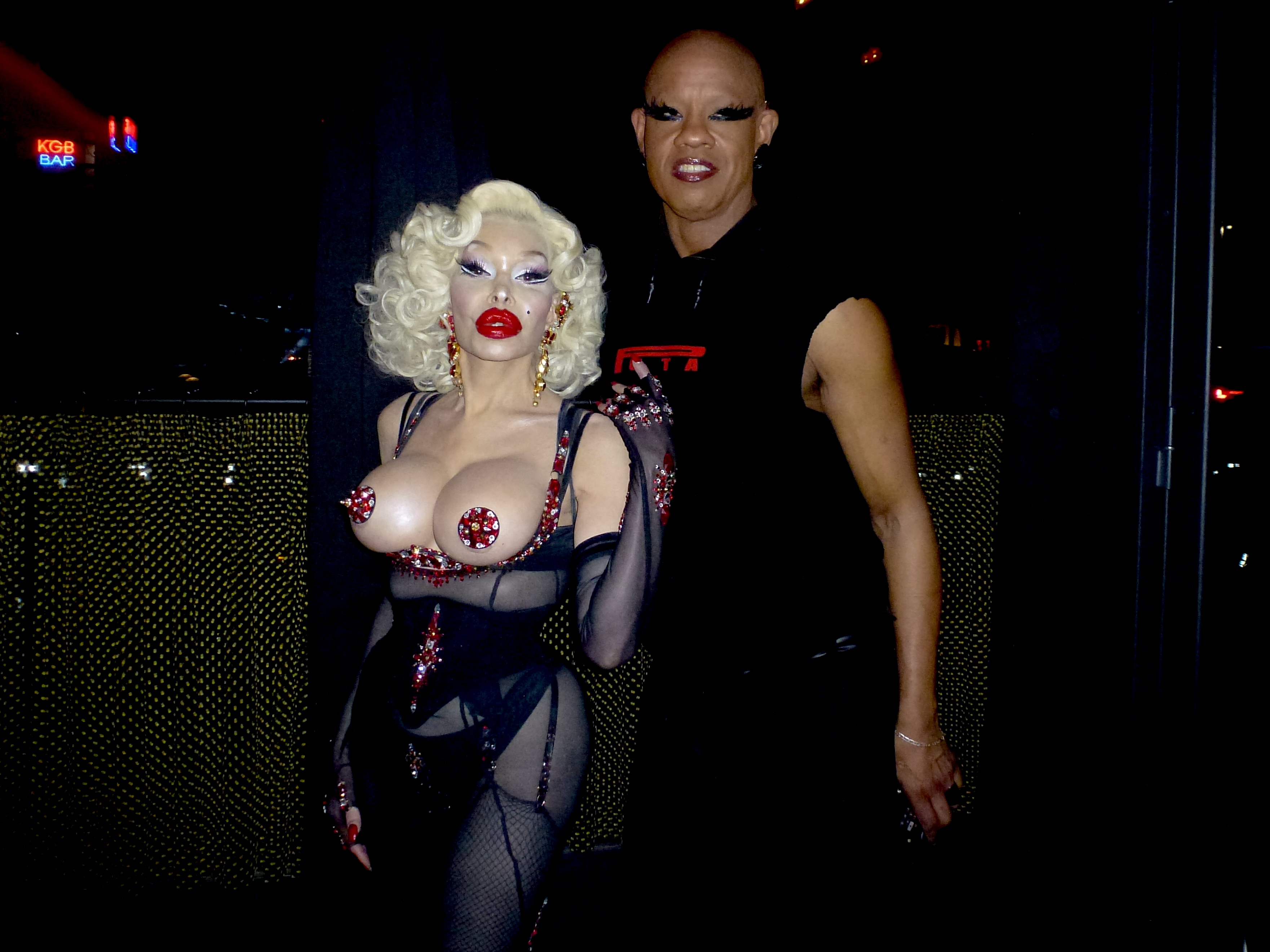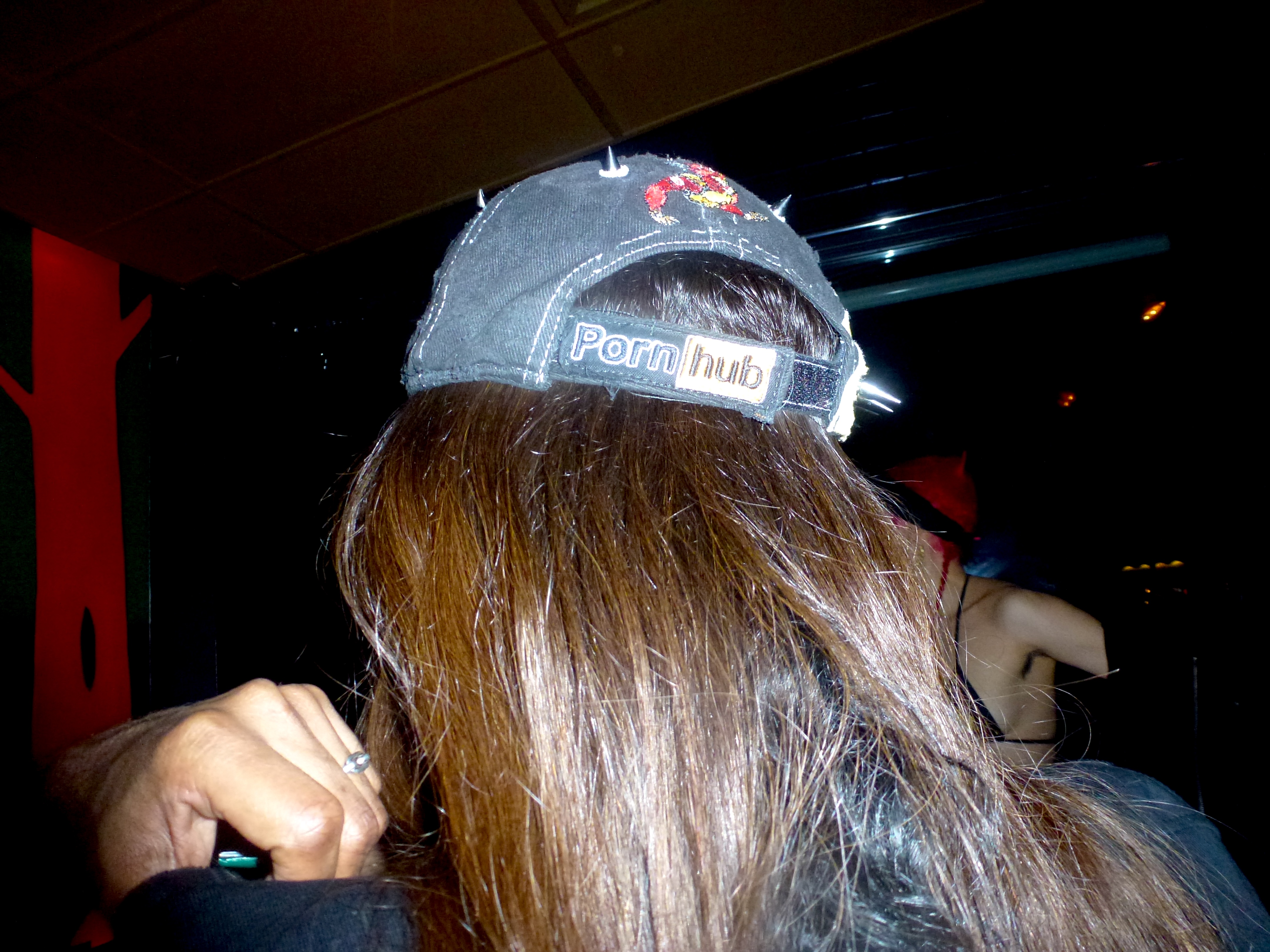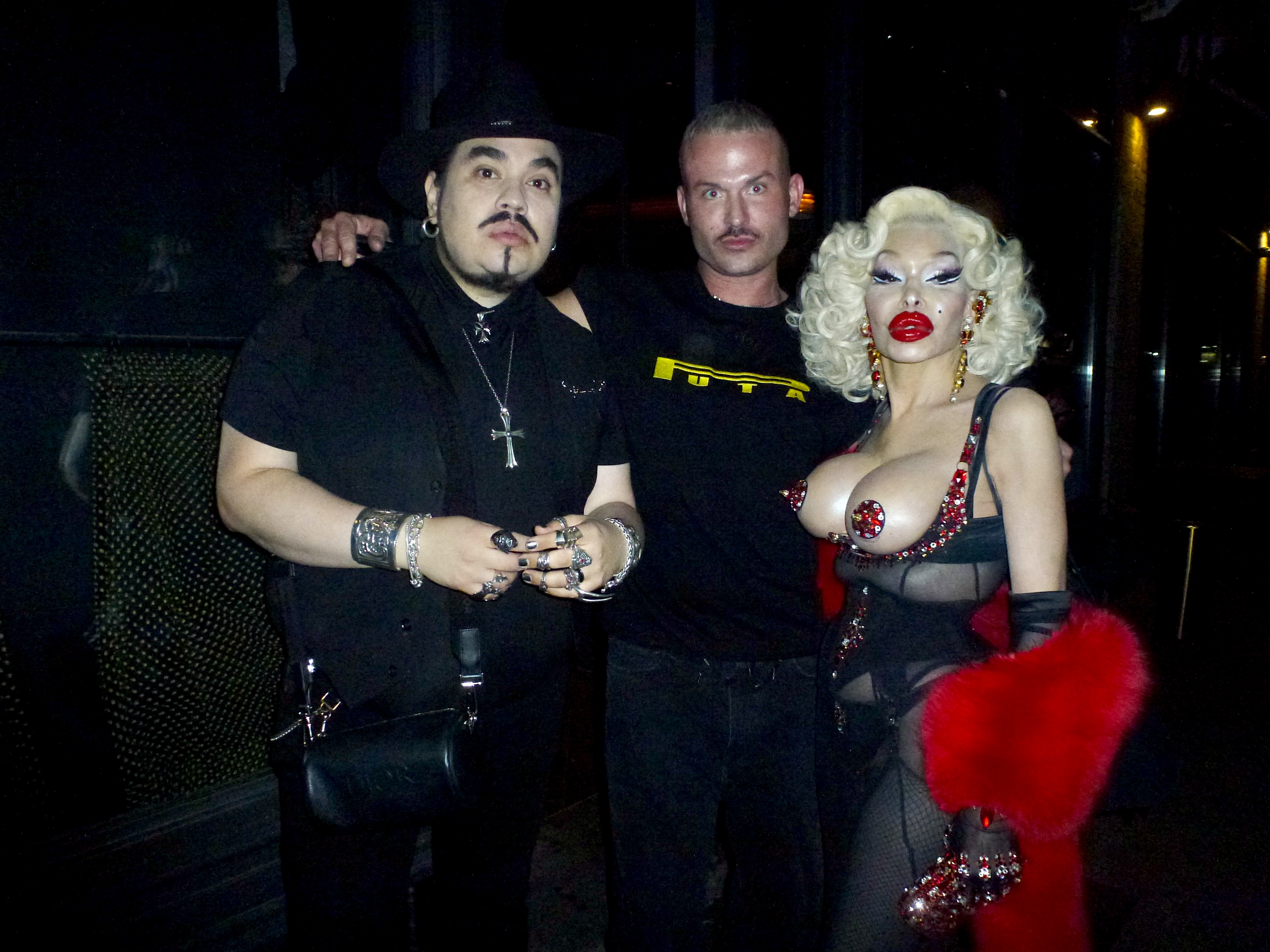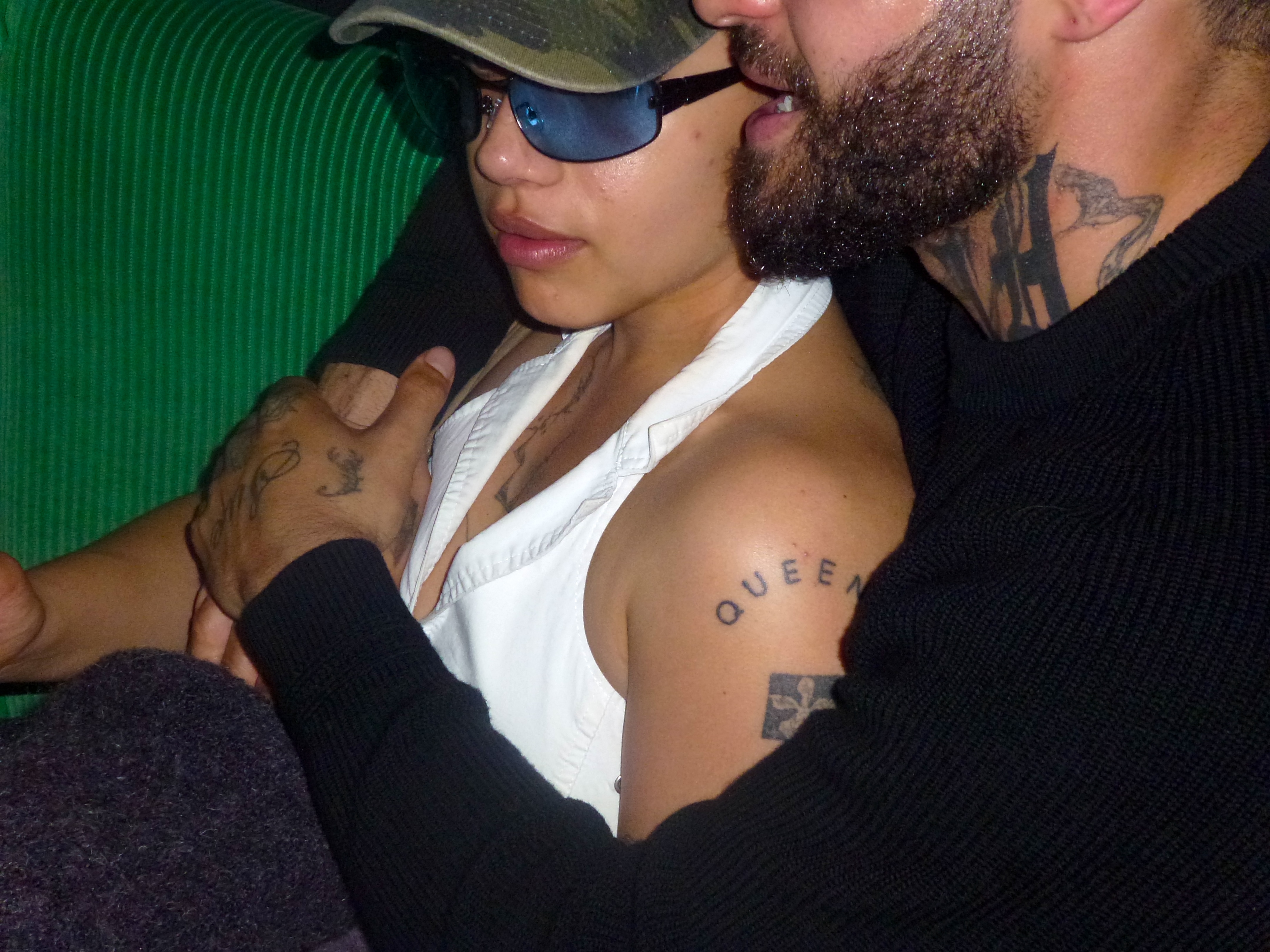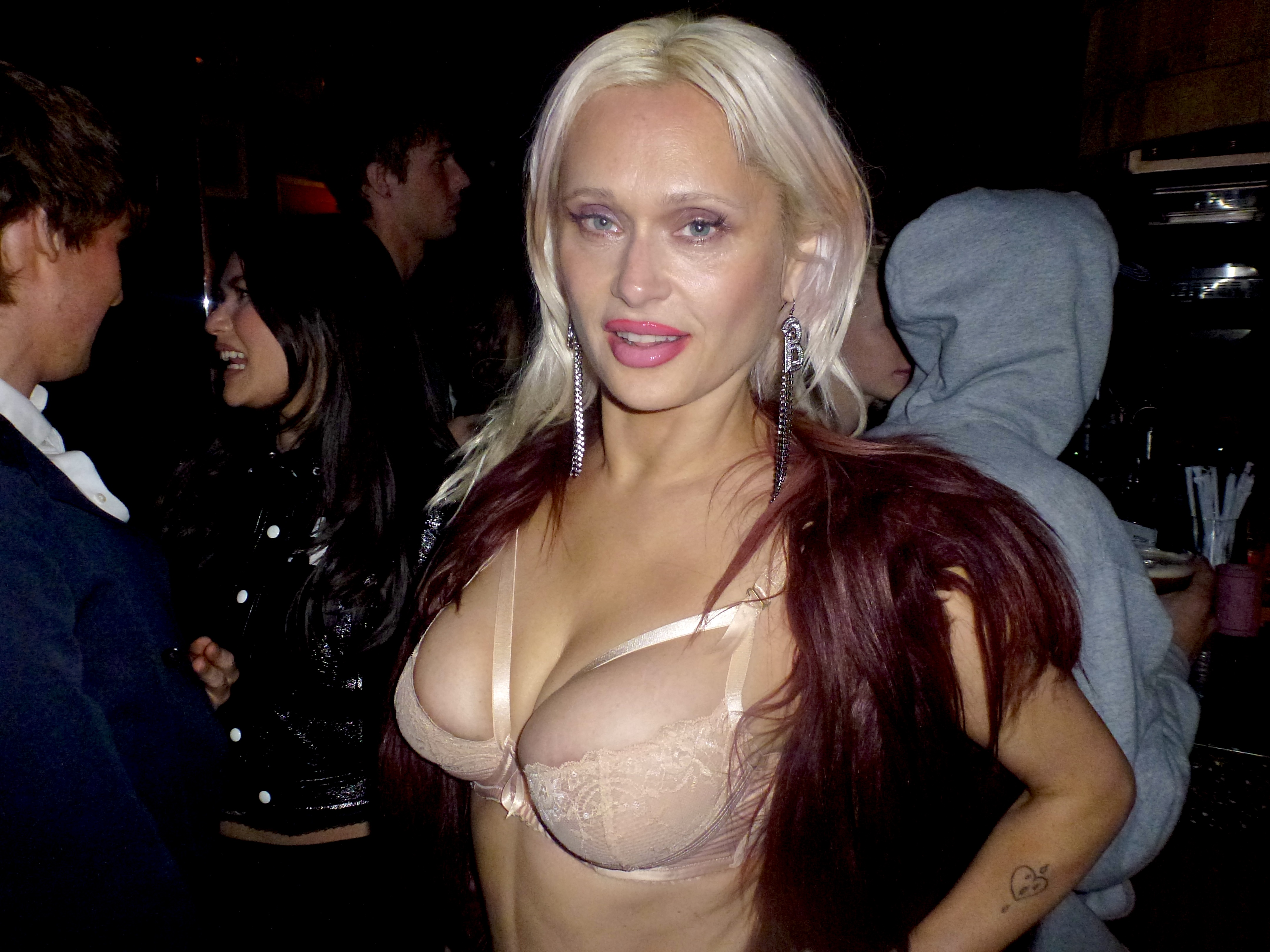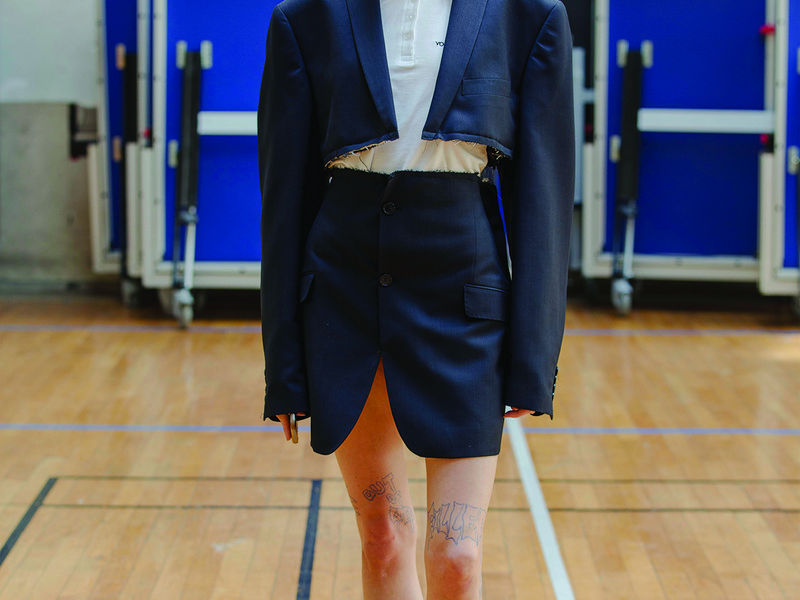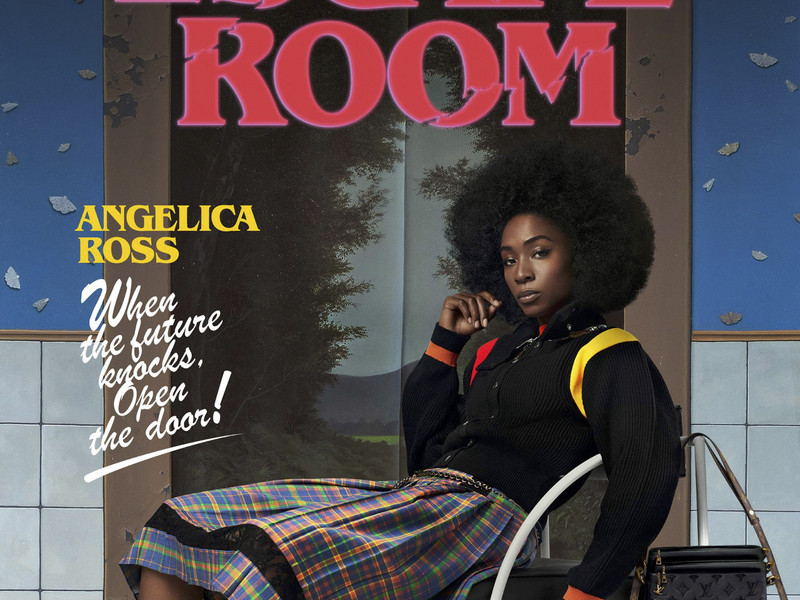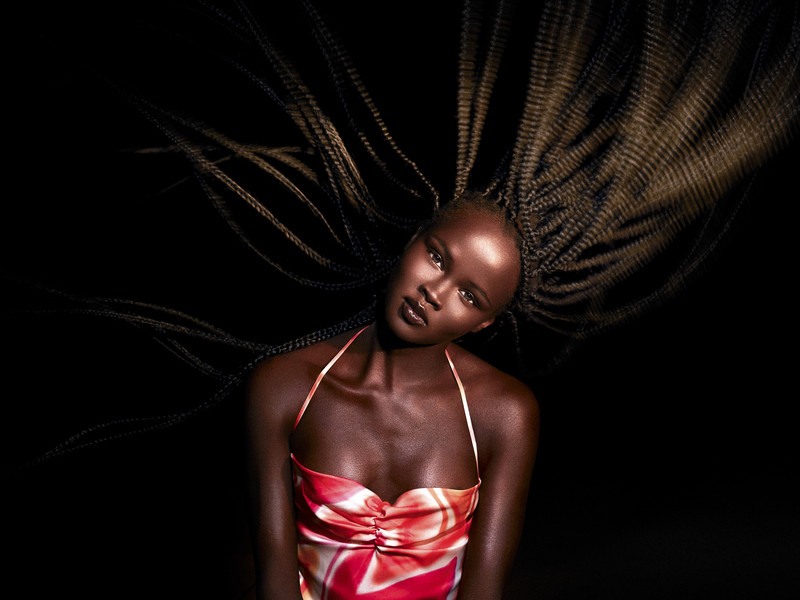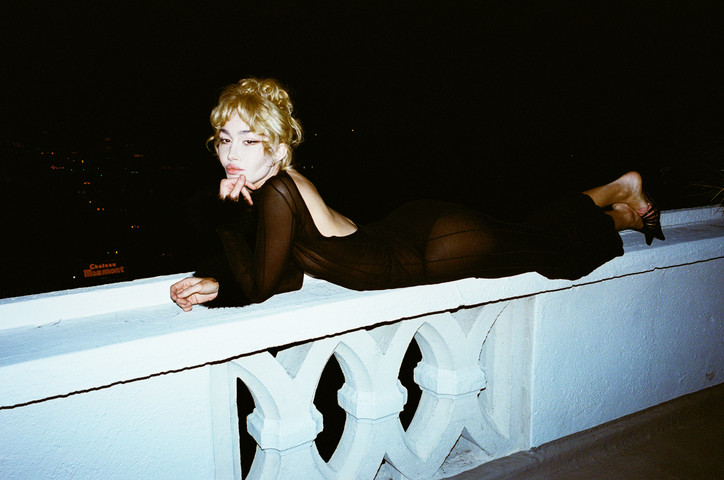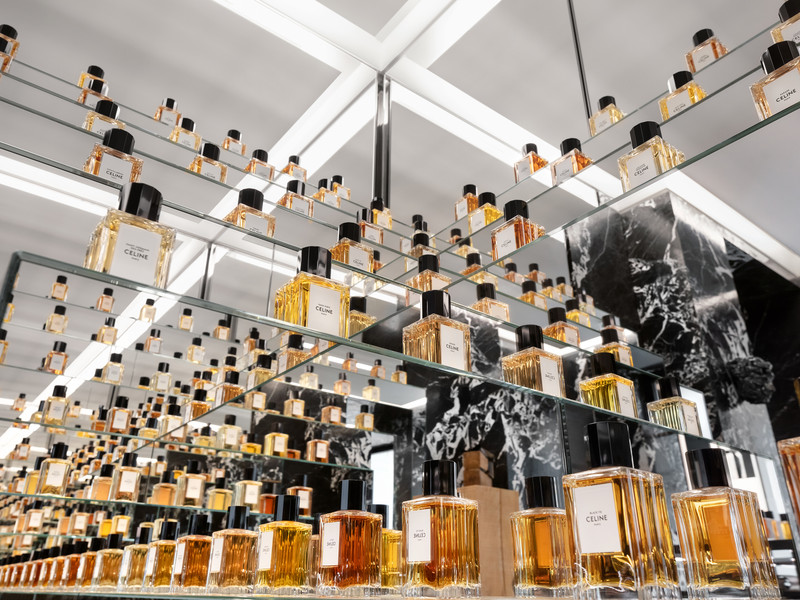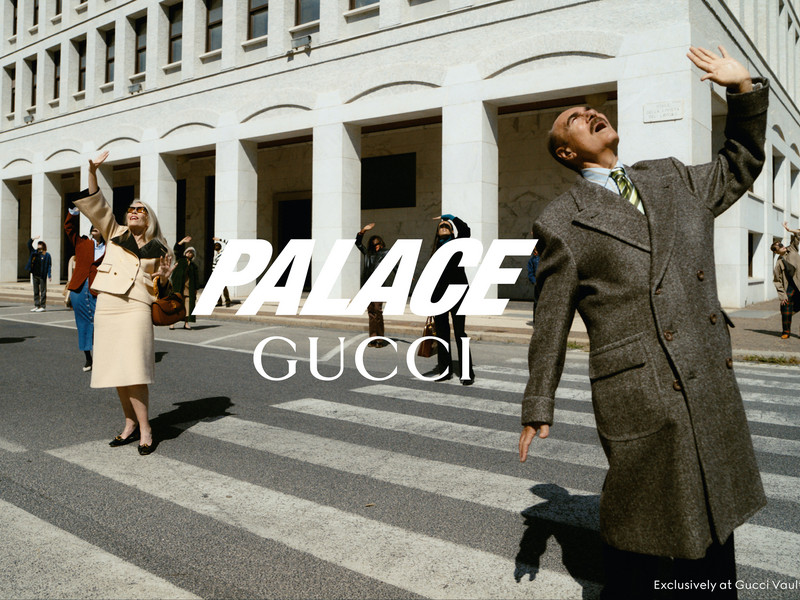Down the Rabbit Hole with Lindsay Vrckovnik
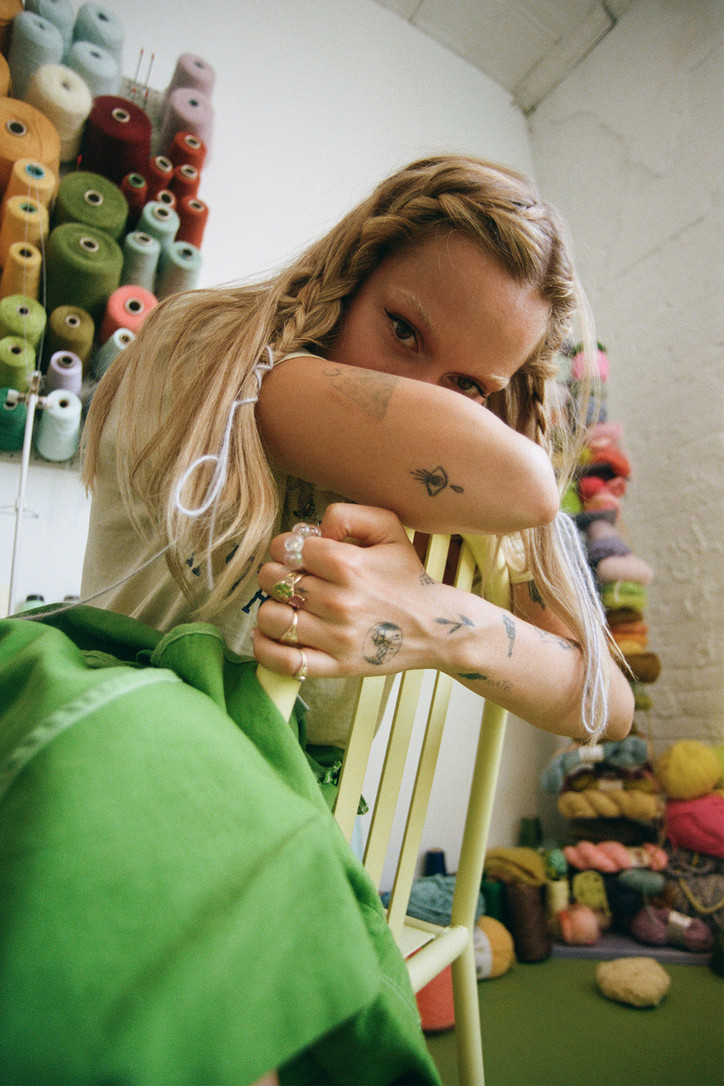
Through the non-traditional color-explosions Lindsay creates by hand, we become more familiar with what lies beyond her public persona — a strong-willed lover of fashion setting her own trends.
In the exclusive interview with the knitwear designer below, office takes a trip down the rabbit hole of Lindsay’s creative mind.
Your personal style is really reflective of your personality — it's definitely a little bit quirky and fun. How did you make sure to bring this unique factor to your own original designs?
I've had a really intense journey with my personal style. I think I've always wanted to dress more loudly and quirky but didn't always feel comfortable doing that. When I was younger, I struggled with that a lot. And then getting into modeling also dimmed my personal style because every model is expected to dress in all black, in tight skinny jeans, and all that. You have to look 'like a model.' That was also when I was a teenager, so I was really in the process of becoming a woman. So to be told to look a certain way in terms of also your body, like staying thin, affected me quite negatively. But I think I harnessed the way that made me feel and brought it to my designs and my personal style. I never wanted to feel like that again, so that's reflected in how quirky or loud my style is now. And it's super colorful. It's pretty much the antithesis of what I was told to look like during that time. On a day-to-day basis, I dress pretty casually just because I'm usually in here working. But my style really includes my ideal outfits if I were to express myself to the fullest. I aim to encourage people to step outside of their comfort zone. I know a lot of people struggle with expressing themselves through clothing because, you know, not everyone lives in New York City where it's totally acceptable to wear whatever. A lot of people have brought that up to me and asked, 'How do you become comfortable with your personal style?' It’s a journey, and I think everyone struggles, but I hope to encourage people to be daring with their clothes, through my work.
I love how you juxtaposed your current viewpoint on style with that 'model off duty' look that is imposed upon women and industry professionals so often. It's amazing that you found a space where you can do both — it's still reflective of your personality and you get to enjoy what you're wearing. Do you have something or someone who informs your colorful aesthetic?
When I was a kid, the reason I was so into fashion was definitely watching MTV music videos — Gwen Stefani, Avril Lavigne, and Beyonce. That music video era of the early 2000s really inspired me because I grew up in a suburb where I wasn't seeing people dressing in interesting ways. Those outfits and music videos — that made me realize that there's this whole other world to dressing and I became obsessed with clothes. I would change my outfits six times a day just because I loved putting outfits together. So I've always had that love for fashion. I think now my inspiration is a little less direct. I don't think I have necessarily an idol or a famous person that I look up to. But when I'm walking through the street, I love to — in the least creepy way possible — take pictures of things I see in everyday life. And I feel like a lot of the time its people who are unintentionally styling something in a way that I think is really, really cool, but they have no idea they're making a statement. I pay attention to quirky things that aren't necessarily fashionable. I love to take inspiration from strangers. I do the same thing with color. I'll go on walks and take pictures of color combinations that are existing in the cityscape or in nature. I definitely try to get inspiration from not just one person or one place. I feel like that is so prevalent with social media and I think that's where it becomes easy to get repetitive and looks become redundant. So I mostly try to look elsewhere, in places other than Pinterest or Instagram. I do love Pinterest as much as the next girl, but I think looking at the environment around me and putting my own spin on it is more fun and more challenging.
New York is such an inspiring city, fashion-wise and artistically. You’ve stated that Verconiik’s goal is to bridge the gap between high fashion and playfulness, making intricate designs more accessible and less intimidating. What advice would you give to someone who wants to improve their own personal style, but may not be sure where to start?
For me, if I was in a position where I was, like you said, just trying to expand on my personal style, you're probably not going to want to make the jump and buy something that's a few hundred dollars and totally out there or something that you're not going to feel comfortable wearing. Personally, I would go to the thrift store and get things that are cheap, so that way there's not too much pressure on whether or not you're gonna end up loving it or if you don't end up feeling comfortable in it. I think thrift stores are a great place to shape your personal style. That's definitely where a lot of my high school friends and I figured out our personal styles. And then, I think once you have an understanding and you're comfortable with your own personal style, then of course that's where you may be more comfortable spending the money on specially-crafted pieces, like my work.
I mean, I feel like I'm still figuring it out, which I think is a good thing. I don't want to box myself into wearing only certain pieces or styles. I definitely feel like I didn't really start buying things that I maybe wouldn't have bought in a traditional store until I started thrifting too. You kind of figure it out along the way.
And there's no pressure. It's so fun.
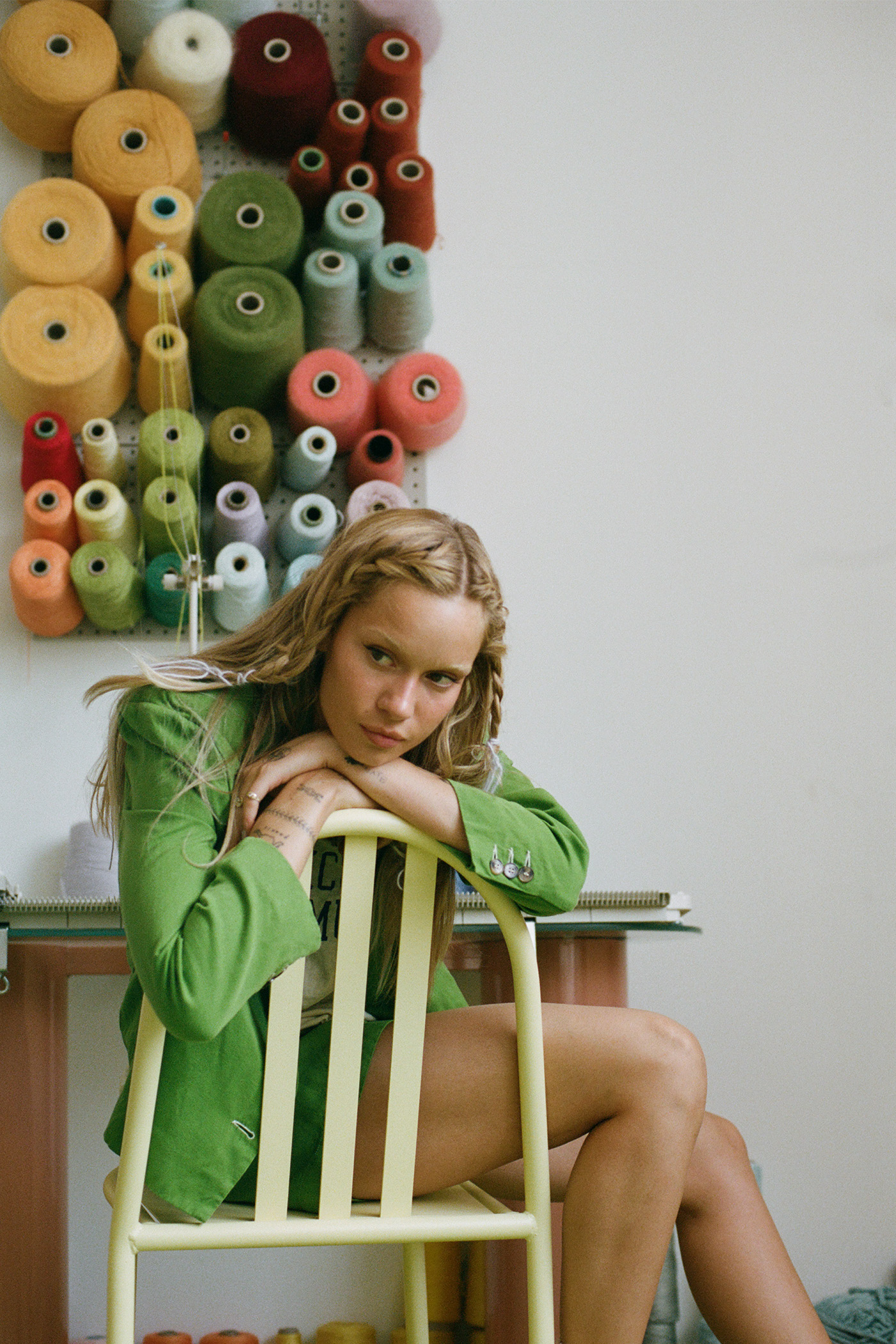
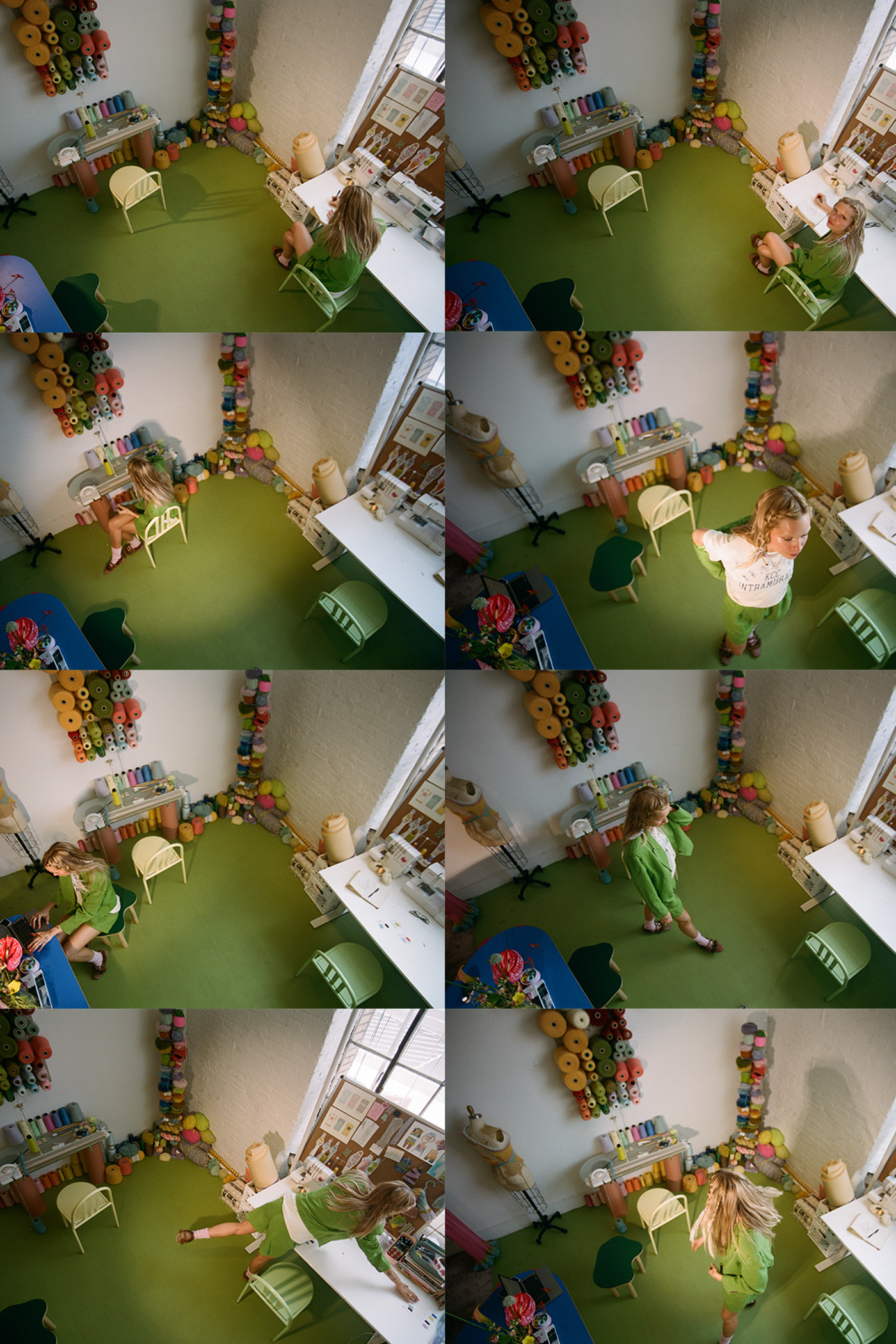
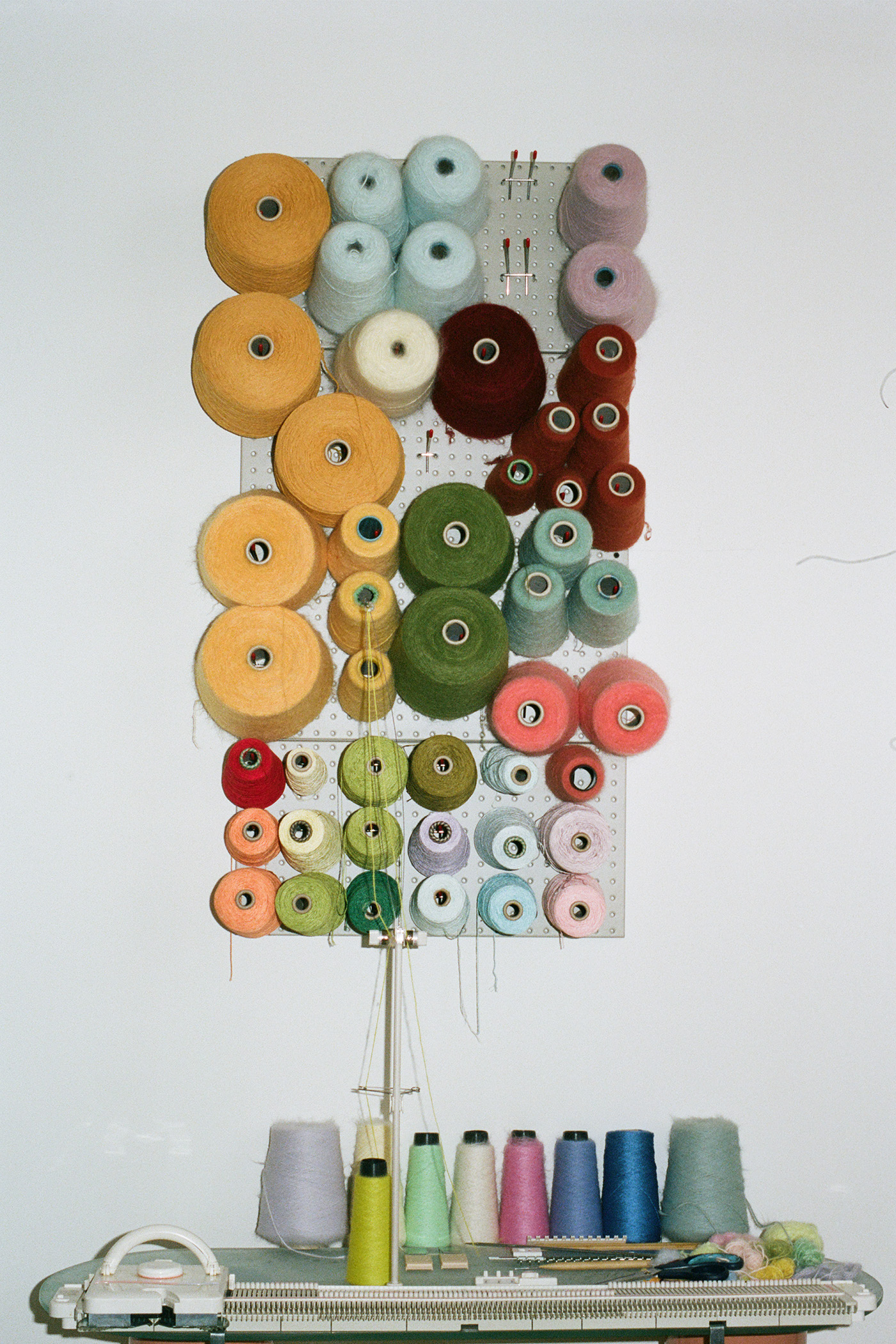
Everything Verconiik is made by you. So you really abide by this slow fashion cycle. Are there any other sustainable practices that you implement throughout your design process?
A big one for me is where I'm sourcing my yarn from because everything I do is made out of yarn. I feel like my knowledge about yarn is really growing every day and I've found so many incredible farms that are so close — either in New York or the tri-state area. I've built good relationships with a lot of them and that in itself, communicating with the people that you're buying materials from, is a sustainability practice because often in fashion, where things are coming from is almost unknown in a sense. So having those relationships and getting all of my materials from within the state is something that I'm always thinking about. And of course, a lot of my fibers come from animals. I love animals. So I also need to know that most of the farms that I work with treat them well. They basically consider them their pets and many of them aren't huge businesses. A lot of them are family owned. So I think we also relate in that sense.
On this idea of slow fashion, I understand that the things I make are on the expensive side for many people, but I think that we've also gotten too used to low clothing prices. And of course, I don't have to go on a huge rant about fast fashion, but I think we all know why that is. I hope I can inspire people to get out of that way of thinking. It’s not normal for a sweater to be $10 because especially with crochet and knits, someone still made that and it took a very long time. I think also making sure that the people who work for me and work around me are all getting paid well is huge. I think about all these things a lot. But it's easy now for me to control those things because I am such a tiny business, so I hope to always hold on to those values.
No brand can do everything, but any consciousness in that realm is a good start. I also really appreciate what you said about pricing. I think that knitwear, especially the things that you make, have so much heart and personality in them — it's like a work of art. So I think when you can understand everything that went into it, then people can try to understand that the price does make sense. Along with certain key styles, you also create made-to-order pieces. What made-to-order piece was the most challenging for you and what piece made you most proud?
Oh my gosh. So I actually have put the brakes on made-to-order pieces just because it got kind of overwhelming for me to create something that the person was gonna be satisfied with, with only being able to speak to them through email. So that was just a lot, but I mean, it is very rewarding in the same way to custom-make pieces for someone. I have this one customer, his name is Samuel and he is my biggest supporter — I've done a few made-to-order things for him. And again, it is challenging when I haven't met this person. I don't exactly know their body type and measurements, so that's definitely the most challenging part. But it's always worked out and seeing him in those pieces has always been so cool because this person supports me blindly enough to put his trust in me. I hope to bring back made-to-order once I have more people to help me out here. So hopefully I can do that sometime soon.
To be able to see that growth would be super satisfying, I’m sure, starting with just you in the beginning. That's amazing that you're at the point where you’re able to have that growth.
I'm so, so excited.
I want to get more into your silhouettes because from what I've seen, a lot of your shapes are really unconventionally clever. How are you able to consistently come up with new designs that subvert stereotypical clothing shapes and traditional body standards?
Knitwear is such a traditional craft. It's been around for so long and I feel like people always associate it with 'your grandma's knits' and it's not something that you necessarily would think is high fashion or breaking any boundaries. So I'm always thinking about how knitwear can be new and refreshed and how to push the boundaries of what knit design is. And there are a lot of designers doing that, especially now, knitwear's kind of had this whole revival which is so, so cool and interesting. I'm always thinking of that juxtaposition of playfulness and almost dorkiness of knitwear, but also, 'How can I make it sexy and kind of strange?' I like to play with the shapes and how tight it fits the body or how much skin it shows. In terms of how I come up with new designs, I'm so bad at this question because I literally don't know. Sometimes things will just come to me at the most random times — sometimes lying in bed when I'm about to fall asleep or I'll have dreams. A lot of it is also trial and error. Sometimes I'll be intending to make something and it totally turns into something else. Lately, I've been making these little fuzzy tops that are very strangely shaped. And those actually came to be because I was trying to make knit underwear and I totally screwed it up. So that's just an example of how one thing can kind of lead to another. I always try to test myself to not give up and to see how I can change and manipulate pieces into something else. And then I think a lot of my stuff is just building off of past work. I do get into creative ruts sometimes and I feel kind of stuck, but I know that my brain always has my back and I'm always gonna get out of that rut eventually.
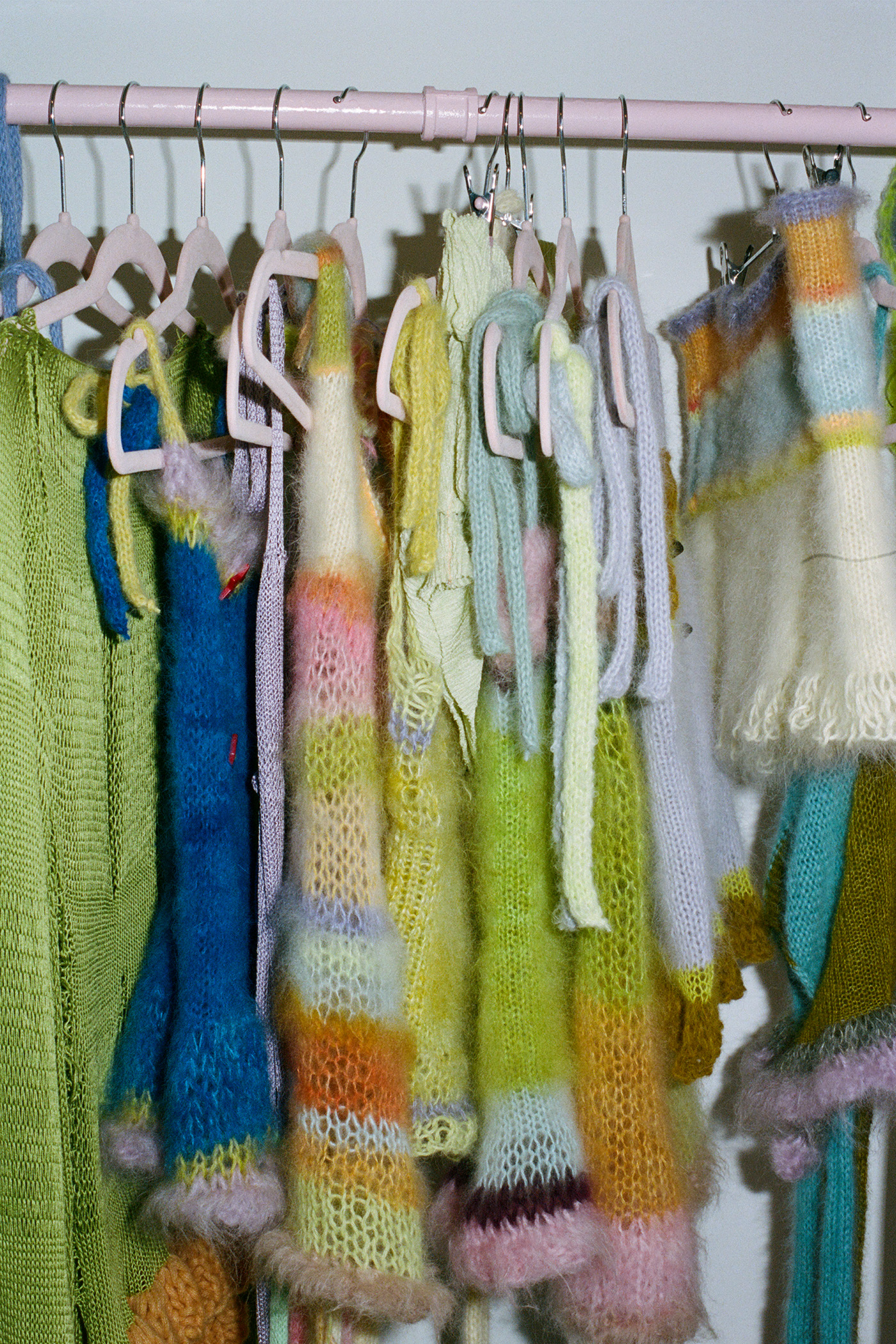
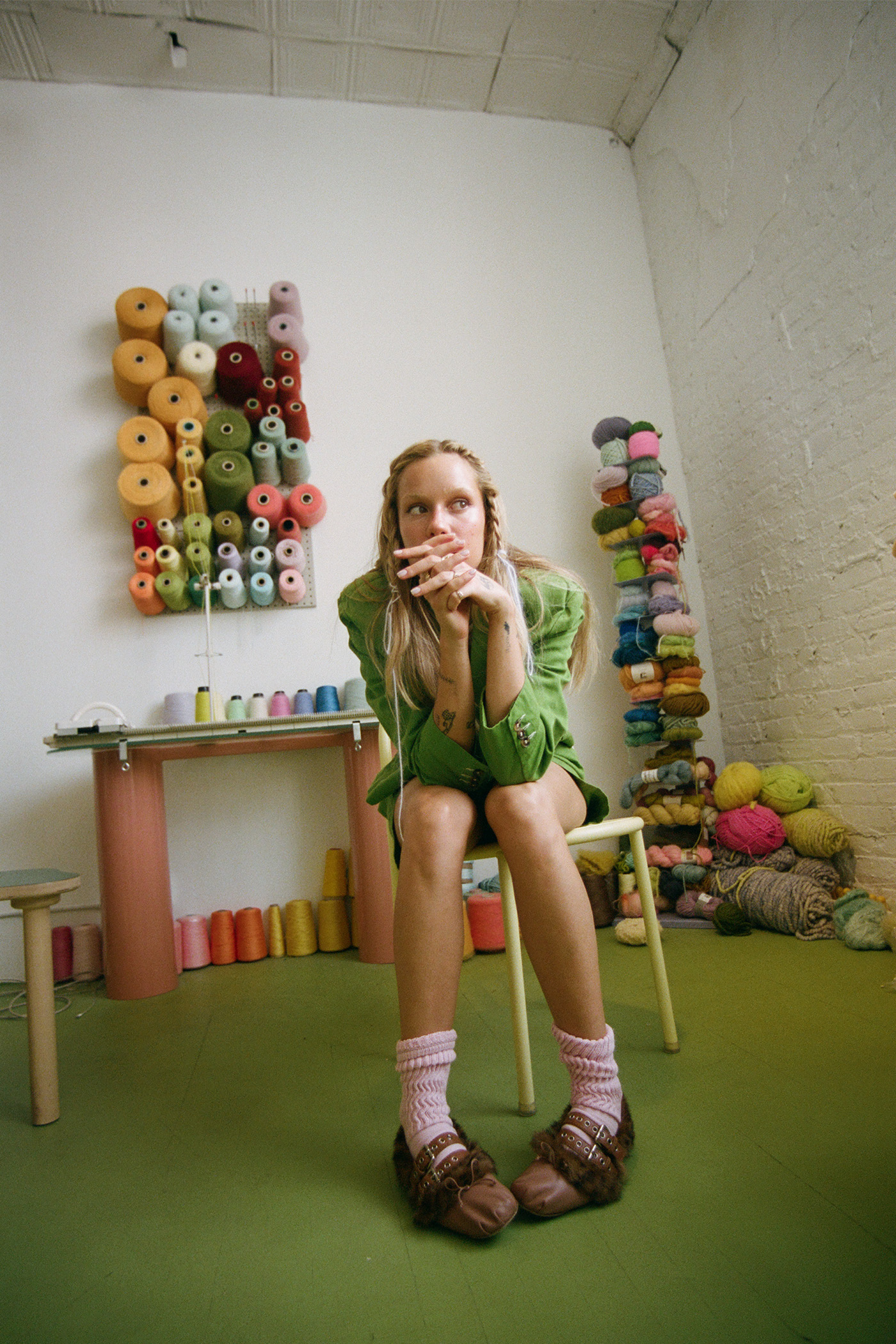
When you're working in this world of slow fashion, you're able to take the time to make a mistake into a serendipitous success. That's the difference between this and the fast fashion process. If you're in a factory and something is not made the right way, it's getting thrown out. With designing, there's this logistical side, and then of course, there's this creative side of ideating cutting-edge designs. Would you say that you have more of that analytical brain or more of the creative brain and how do you reconcile one side with the other?
I'm definitely way more on the creative side. I went to school for fashion design and I remember some of my professors would get frustrated because I'm just so not technical. When we were making cut-and-sew clothing, like pattern making and anything mathematical, it just so wasn't my thing. I love to start something and see where it goes. In school, it was very much showing your process, showing your sketch, and then making the pattern. I really don't do any of that anymore. Sometimes I'll draw ideas because I do love to draw, but I usually want to start making something as soon as I think of it. So I've kind of thrown that whole fashion school process in the trash, but of course, there are still technical things I have to think about, like sizing. But yeah, definitely more of a creative brain.
When I look at some of your pieces, it reminds me of a fairy tale. If you could step into one fairy tale, which would you choose and why?
Is Alice in Wonderland considered a fairy tale?
That totally counts.
I love Alice in Wonderland and that whole story and that psychedelic world. That would definitely be one that I would step into. I love all the colors in the original movie. I feel like I'm kind of existing in that world, in my studio, see — I painted the floor green. I love it. It's all colorful. I feel like I always want to be surrounded by the most color at all times.
I think your pieces exist in a world of their own, but I could definitely see your pieces existing in that world too. When people put on one of your designs, what type of place do you hope that they transcend to?
I think about this a lot because that is the goal of my clothing. I think that a lot of the people who buy my clothes already have a very strong sense of style and self because you'd have to be comfortable enough to wear something so bold and bright. So I think a lot of them already do, but I also think a lot of them buy it as an aspirational piece that maybe isn't something that they're gonna wear every day. But when they do, I hope that they feel super bold and confident and bright. I want people not to hide their personalities and to not be scared to stand out.
